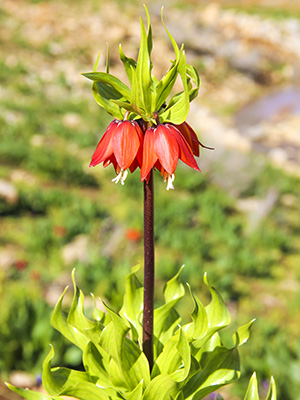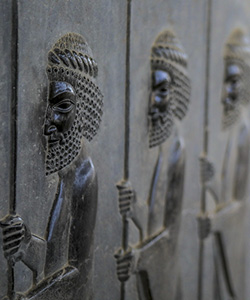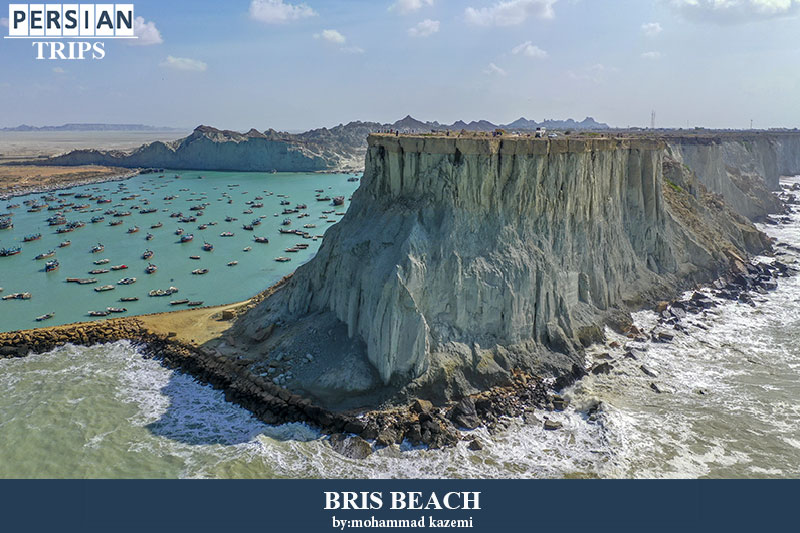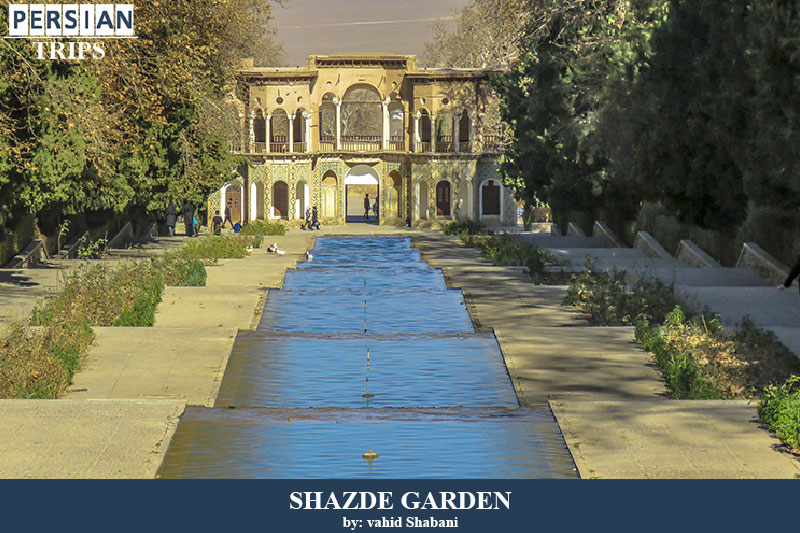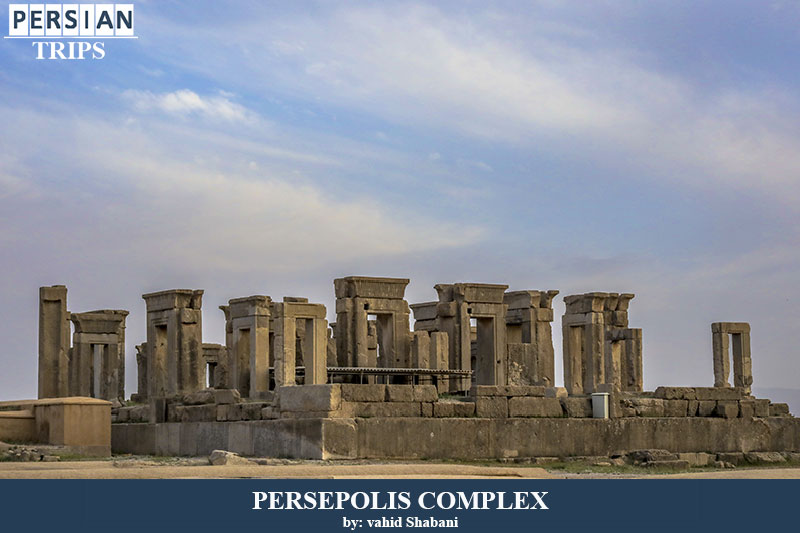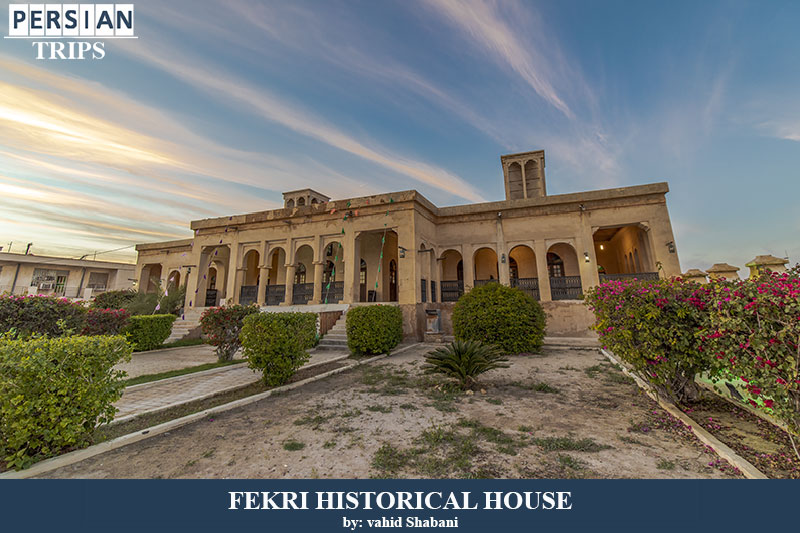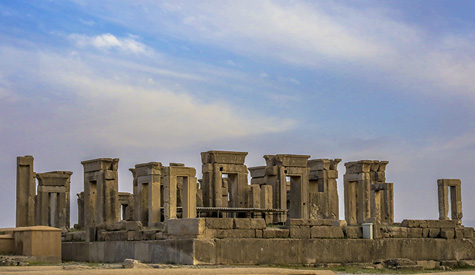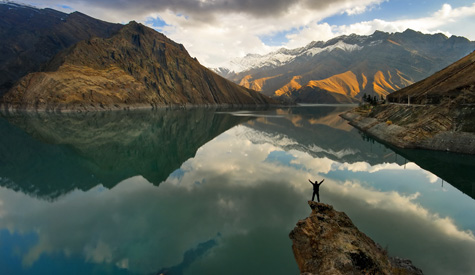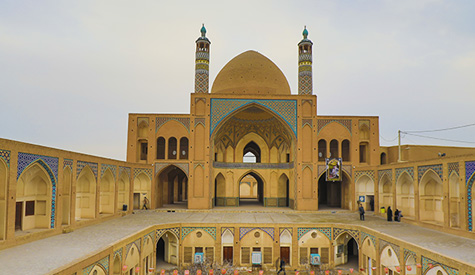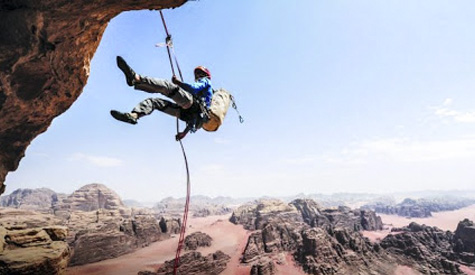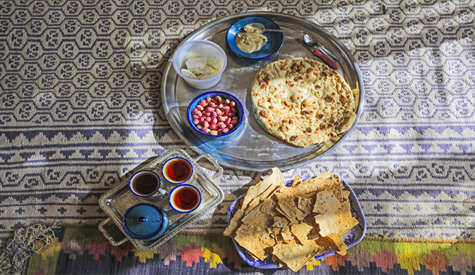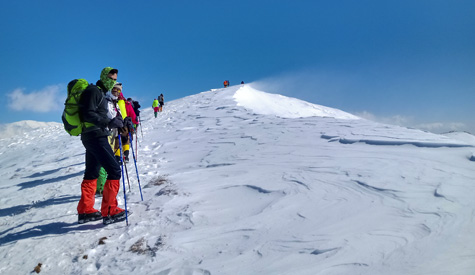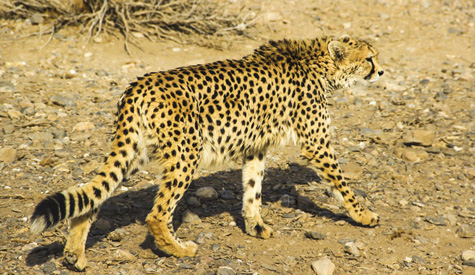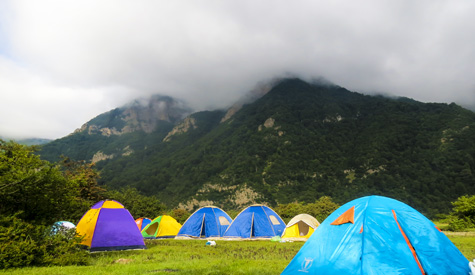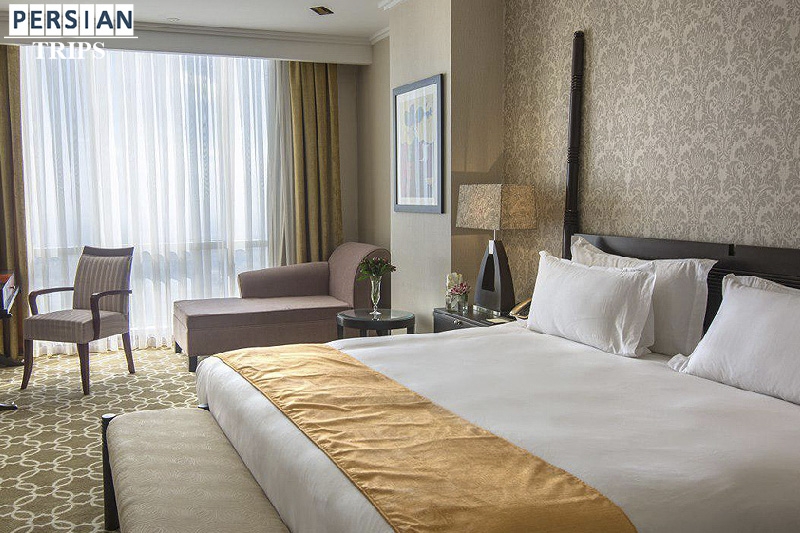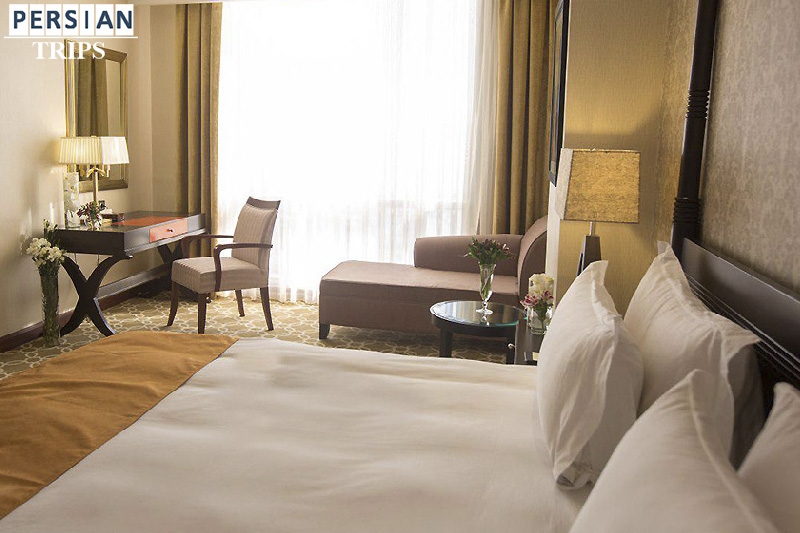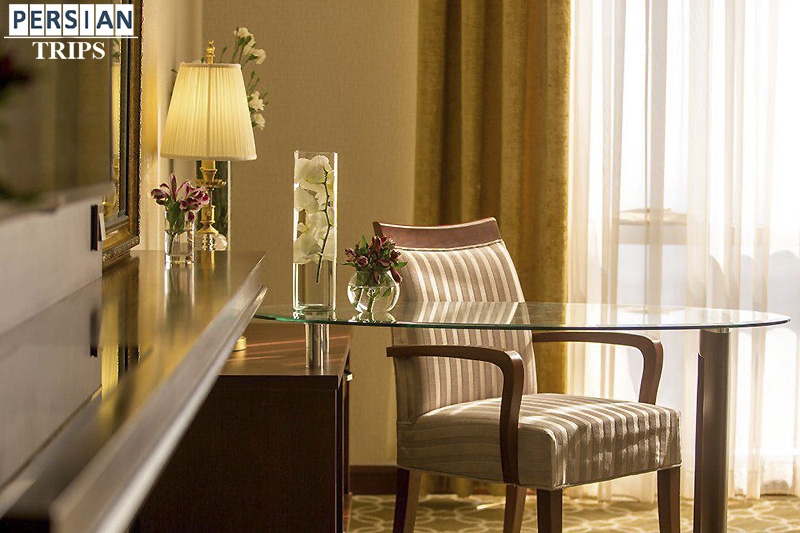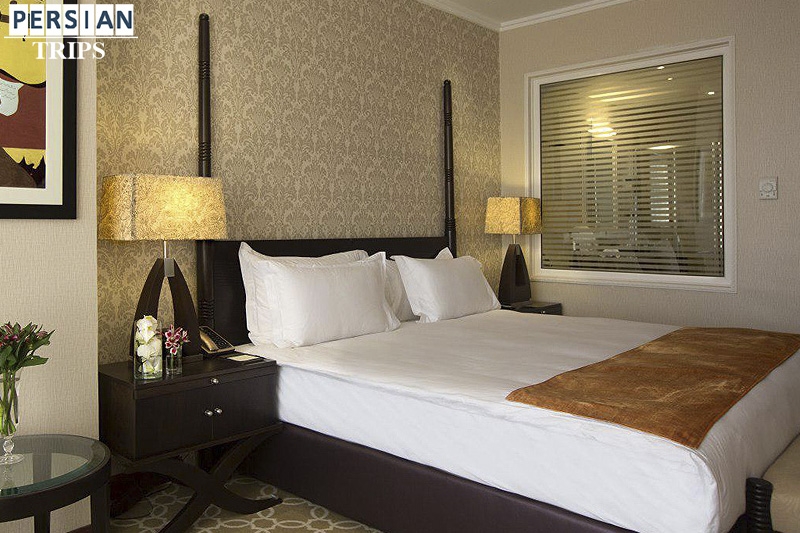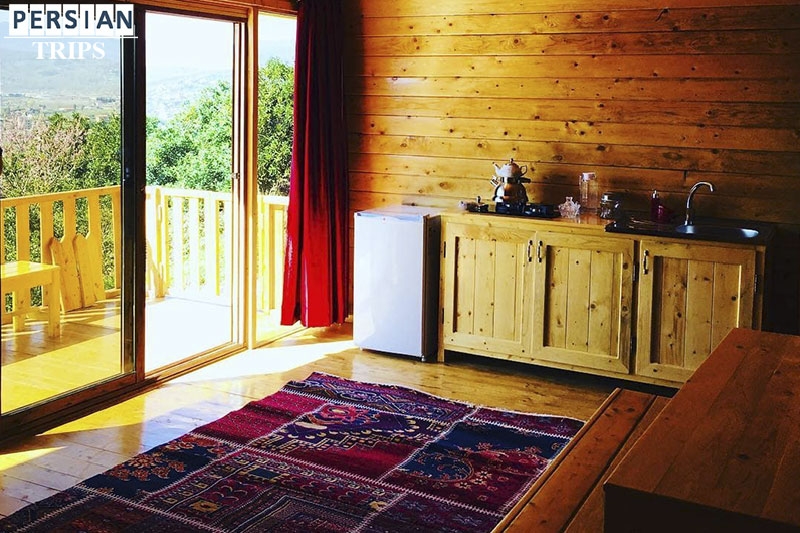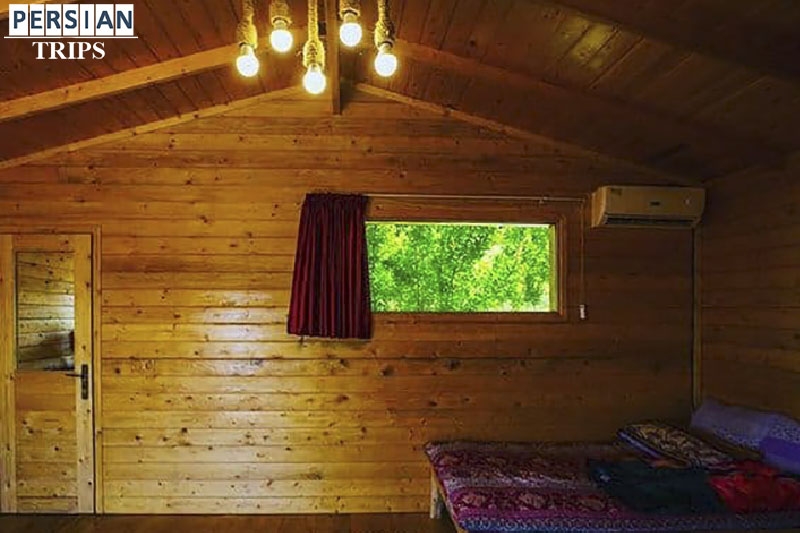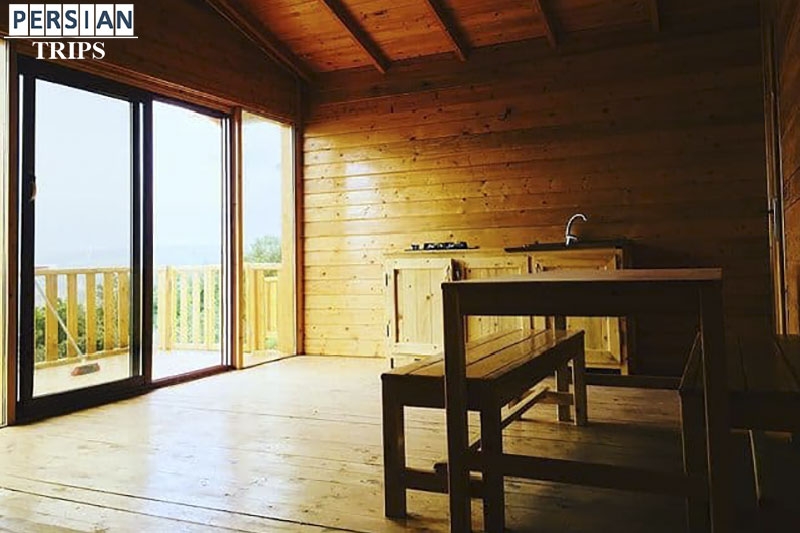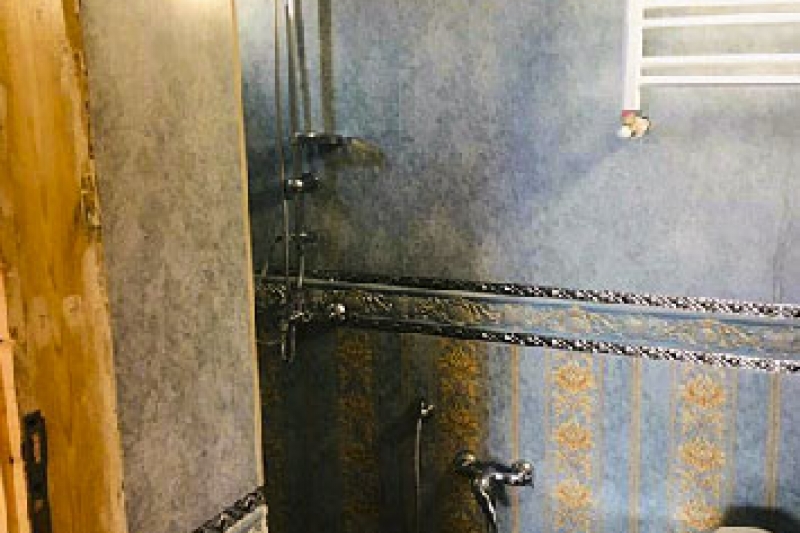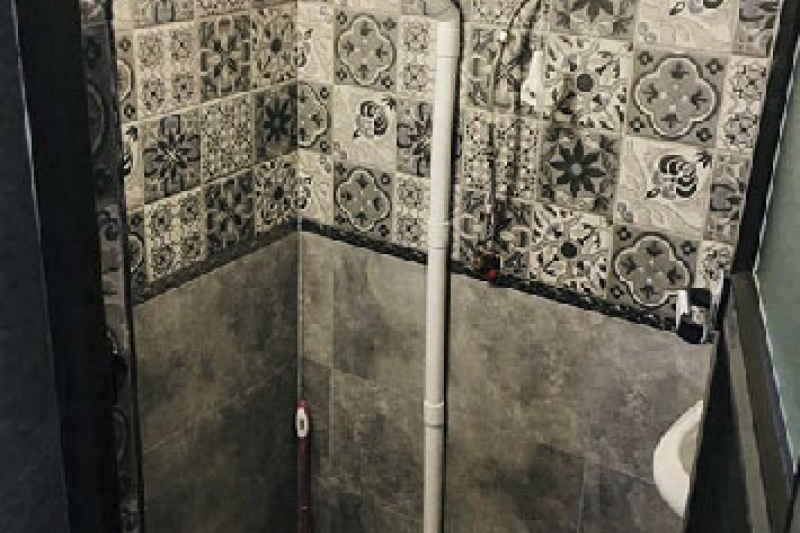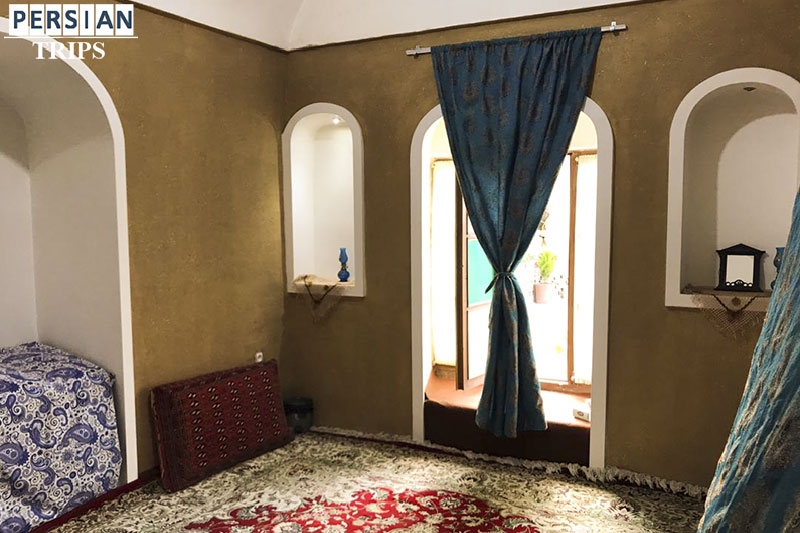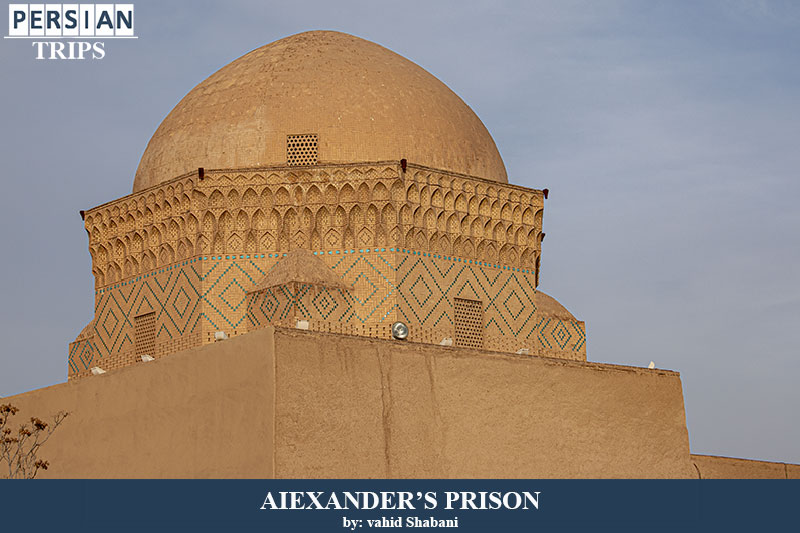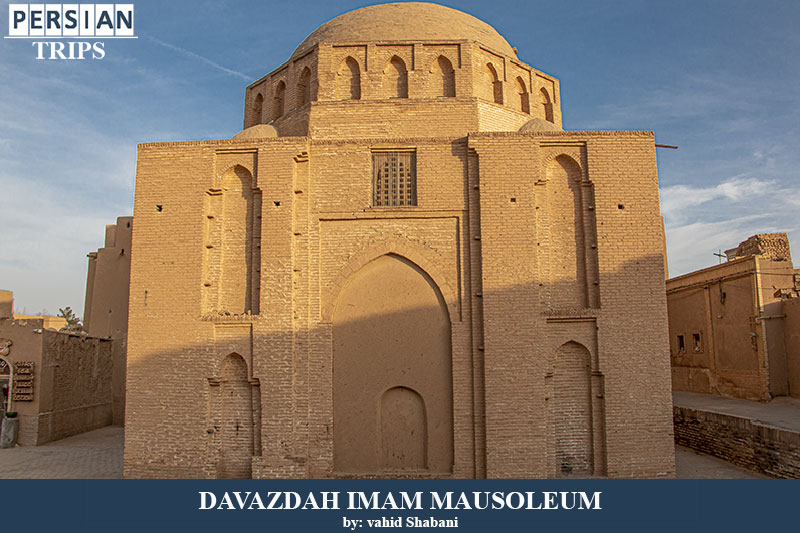Uncategorised Article Count: 12
Joomla Article Count: 1
Layouts Article Count: 7
Features Article Count: 4
Reservations Article Count: 3
Category (en-gb) Article Count: 1
Attractions Article Count: 0
Iran tourist attractions
In this section, you can see the tourist attractions of Iran based on the division of provinces.
Alborz Province Article Count: 7
The ancient land of Alborz, whose long-standing rituals, traditions and customs have always shown the immortality and deep-rooted power of its culture, has thousands of mysteries that are more visible and audible for researchers, tourists and eager travelers who aspire to know. Due to the migrating capacity of this province, it has an ethnic composition, each of which speaks its own language or dialect. Most of Turks live in Nazarabad and Karaj, Tatars in Eshtehard, Taleghan and Asara, and some Kurds, Lors, Arabs, Mazandaranis and Gilakis are scattered all over the province. Since different dialects and languages are spoken in this area, this province is called Little Iran.Alborz province has fertile soil and a good climate, which is why it produces high quality agricultural products. In Taleghan, walnuts, apples, pears, rhubarb, thyme, leeks, barberry and apples are harvested.
Geography
Alborz province is the 31st province of Iran with beautiful nature and long history. With the approval of the members of the Islamic Consultative Assembly in 2010, the cities of Karaj, Taleghan, Savojbolagh, Nazarabad, Eshtehard and Fardis were officially formed. In this plan, Karaj was considered as the center of the province. The name of this new province is taken from the Alborz mountains, an important part of which passes through the north of this province. The name Alborz comes from "har" meaning mountain and "Borz" meaning high.
Customs
The people of Alborz province have many old and traditional customs. Nowruz Khani (recitation), Khaneh Tekani (cleaning the house before Nowruz), cooking samano and visiting the graves are among the customs of the days approaching Nowruz. Shawl Andazi was one of the customs of Yalda night in Taleghan. Cooking Ashe poshte pa (kind of pottage that is cooked when some body goes on a long trip specially a military service) and Ashe baran (cooking pottage for rain) are other examples of customs in this province. One of the most popular dishes served in Karaj is halim with mutton. Yuan Ash, bean dish, Taleghan lentil stew, etc. are other local dishes of Alborz people.
Handicrafts
Travelers returning from Barghan buy souvenirs like the famous Barghan plum or greengage, honey, berries, walnuts, yogurt, milk and local dairy products. There are many shops on Chalous Road that sell local dairy products, honey and cranberries; jujube, azalea, elm, persimmon and grapes are also abundant in Alborz province. Carpet weaving, reinforced concrete sculpture, pottery, needlework, masonry, glassmaking and woodcarving are among the handicrafts of Alborz province.
Tourist Attractions
Gachsar Tulip Garden, Eshtehard Colorful Hills, Eshtehard Rocky Houses, Chalous Road, Khur Waterfall, Ozbaki Ancient Site, Taleghan villages and waterfalls, Soleymaniyeh Palace, Kordan Tower, Meydanak Tower, Remains of Takht Rostam Stone Fire Temple, Astanak City Palace, Gachsar Stone Tower, Eshtehard River and Salt Lake, Samsam Castle,Vakil Castle, Mesbah Bathhouse, Heljerd Bathhouse, Shahrestanak Village, Shah Abbasi Bridge, Dokhtar Bridge, Shah Abbasi Caravanserai, Yakh Morad Cave, Amirkabir Dam and Lake, etc. are among the attractions of this province.
Ardabil Province Article Count: 7
Ardabil province with a population of 1,270,000 people in 2016 census was ranked 16th in the country in terms of population and with an area of 17,953 square kilometers is located in northwestern Iran and accounts for about 09.1% of the total area of the country. The common mother tongue of the people of the region is Azeri Turkish. Of course, the residents of some villages of Namin and Khalkhal city speak in the dialect of Tat and Talesh.
Geography
This province has a border with the Republic of Azerbaijan and East Azerbaijan Province in the west, with Zanjan Province in the south and with Gilan Province in the east; in addition, five cities of this province share about 369 km of borders with the Republic of Azerbaijan. Ardabil province has 11 cities named Ardabil, Aslandooz, Bilesvar, Sarein, Meshginshahr, Nyr, Garmi, Parsabad, Kowsar, Khalkhal and Namin; with Ardabil city being its capital. This province is known as the summer resort of Iran in terms of having a suitable climate and very unique capacities in the historical, natural and cultural fields. Tourism is considered as one of the most important reasons for development of Ardabil province. The World Complex of Sheikh Safiuddin Ardabili is one of the 19 UNESCO World-known Heritage Sites located in Ardabil.
Customs
The use of local and traditional clothes is no longer common in many parts of Iran, including Ardabil province, but nomadic tribes and villagers in some parts of the province, such as Moghan and Arasbaran still wear local clothes. The costumes of the Shahsavan nomads of Ardabil are the last remnants of the local indigenous clothing of this province.
Handicrafts
Ardabil handicrafts include wood mosaic, pottery, wood inlay, semi-precious stone carving, painting, frame weaving, kilim weaving, gilding, needlework, jajim weaving, wooden works, local clothes (traditional clothes), Carpentry, porcelain knitting, silver making, leather handicrafts, traditional construction, carpet design, traditional ornaments, glass cutting, engraving, stone engraving, wood lattice, mosaic tile, batik printing, fabric painting, sculpture, Pottery, painting on glass, pyrography, seven-color tiles, plastering, painting on leather, embroidery, engraving, carving, copper-plating, knife-making, saddlery, dyeing, and tapestry. Honey and black halva are among the most famous souvenirs of this province; other souvenirs in the region include dairy products such as buttermilk, butter, yogurt, cheese, etc.
Tourist Attractions
Ardabil province is full of valuable historical monuments, natural sights and houses with original and rich culture, which are among the reasons for its popularity among travelers and tourists. Tomb of Sheikh Safi Al-Din Ardabili, Shurabil Ardabil Lake, Neor Lake, Ardabil Old Bazaar, Shahr-e Yeri, Meshginshahr Suspension Bridge, Meshginshahr Castle, Sabalan Peak, Alvarez Sarein ski resort, which is the largest ski resort in Iran, Fandoghloo Forest in Namin,Fandoghlu forest grass skiing, Shabil Spa and Atoglu Lake, Shirvan Valley in Meshginshahr, Khalkhal Paradise Nature, Tomb of Seyed Amin al-Din Jabrail in Ardabil, Tomb of Sheikh Heydar in Meshginshahr, Holy Mary Church of Ardabil, Ardabil Anthropology Museum, Ardabil Grand Mosque, Meshginshahr and Sarein spa complexes such as Sabalan Sarein water treatment complex and the stone village of Vind Kalkhoran Sarein are among these sights.
Bushehr Province Article Count: 11
Bushehr, with Bushehr Port in the center, has a border with Persian Gulf, and it is the seventeenth province in Iran in terms of area. This province consists of 10 counties, 24 sections, 46 villages, 37 cities and 910 small villages. Bushehr, Tangestan, Jam, Dashtestan, Dashti, Deir, Deylam, Asaluyeh, Kangan, and Genaveh are counties of Bushehr province. This province has Kuzestan and Kohgiluye Boyer Ahmad to the north, Fars province to the east, Persian Gulf to the south and west, and Hormozgan to the south-east. The area of Bushehr province is about 27,653 square kilometers.
Geography
This province consists of two plain parts in the western coast and the mountains of the southern Zagros in the east. The heights of Bushehr province, which is a continuation of the Zagros, are called Gachtorsh. The heights in the southern areas approach the sea, which are known as the Nokand Heights. Khormuj Mountain with a height of 1860, is the highest peak of Bushehr province in Dashti city.
Customs
Celebrating the birth of Hazrat Fatemeh, the birth of Hazrat Mohammad, Mid- Sha'ban, the birth of Hazrat Ali, ceremonies related to the beginning of the holy month of Ramadan, fasting customs and other common religious celebrations like Ghorban, Ghadir, Besat and also the celebration of the birth of other infallible Imams are other important religious celebrations in Bushehr province. Eid-e Fetr is popular among the people of Bushehr province as the Eid- e Mordeha (Eid for the Dead ) or the Eid-e Talkhak (Eid of Bitter) because those, who have lost one, hold a ceremony called Fatehe Khani, and people go to visit them to offer their condolences on this day.
Handicrafts
Ababafi (cloak weaving), Gargour bafi, Gabbeh bafi, boat building, fish and shrimp, dates and ardeh (tahini) are some of the famous handicrafts and souvenirs of this province. One of the most famous local foods of Bushehr is all kinds of Qeliyeh, Qeliyeh is originally an Arabic word meaning various kinds of food prepared with meat. The women of this province wear a long shirt with a black cloak, a thin black mask, a thin scarf, pants and a kind of sandals known as Kush. The official shirt of the women of Bushehr is a loose-fitting dress called the Arabic shirt, with beautiful and interesting decorations used in sewing it. Bushehr women often go out with local chador.
The long white shirt called "Dashdasheh" is one of the common men's clothes in Bushehr province. Older men use a type of scarf (cashmere shawl) by which the man is identified as an old man. The men of Bushehr wear a cloak called “Dagle” and usually a white short-sleeved underwear. They also wear colored sweatshirts and wear them on their pants, which is known as Langoote.
Tourist Attractions
Ghocharak hot spring in Delvar city, Niayeshgah Mand at a distance of 30 km from Khormuj, Hele protected area at a distance of 10 km northeast of Bushehr port, Pardis jam mountain, Shaghab cemetery in south of Bushehr city, Rais Ali Delvari House and Museum, Goor Dokhtar in Tang Eram Dashtestan city, Cyrus Dashtestan palace in Borazjan city, Historical palace of Nasouri in Siraf, Siraf Cemetery and Archaeological Site in Siraf Port, Jashk salt dome between Dashti and Deir cities, Imam Hasan Basri mosque, Bushehr Persian Gulf Maritime Museum, Siraf Historical cemetery, Bushehr Amiriyeh Mansion are some of the sights of Bushehr province.
Chaharmahal and Bakhtiari Province Article Count: 6
Chaharmahal and Bakhtiari province with an area of nearly 16,533 square kilometers is located in the Zagros Mountains, adjacent to the provinces of Isfahan, Khuzestan, Kohkiluyeh and Boyer-Ahmad with a population of over one million people. Two fertile life-generating sources in this province, namely Karun and Zayandehrud rivers, have turned a large territory of the province into summer resorts with eye-catching nature.
Geography
The province is divided into 7 counties of Shahrekord, Borujen, Lordegan, Farsan, Ardal, Koohrang and Kiar, with Shahrekord as the capital that has a height of about 2060 meters above sea level on the plateau of Iran. The distinctive feature of the province is its pristine and beautiful nature, which includes wetlands, lofty peaks always covered with snow, flowing springs, forest and green areas, historical buildings, etc., which make the province a unique area with tourist attractions.
Customs
One of the customs of the people living in Shahrekord is the cheragh baran ritual. Every year, at the time of New Year, the locals come with an oil lamp or a candle to either of the two shrines of Halimeh and Hakimeh Khatoon to ask Sayyid (those believed to be the descendants of prophet Muhammad) to light their candle or lamp to bring them good luck at the beginning of the year. Ashkenoon ceremony is another custom of Shahrekord which is held by the bride and groom's family after accepting the engagement. In this ceremony, which sometimes lasts even a few days, women celebrate with handkerchiefs and men with sticks; at the end of the ceremony, a wedding sermon is given. In Chaharmahal and Bakhtiari province, various dances are performed during celebrations and festivals, the most famous of which are wedding dance, Dastmal (handkerchief ) dance, and sculpture dance.Chogha or Chokha is the nomadic men's fabric, which is sewn from fleece with white and black colors; this pattern is said to have been taken from the Choghaznabil ziggurat while others believe that it originates from the tomb of Cyrus the Achaemenid. This top has short sleeves and its height reaches below the knees with a weaving technique similar to a kilim. Due to its density, this material partially prevents the rainwater penetration.
Handicrafts
Curd, cranberries, honey, high-quality turmeric, medicinal plants, and a kind of valuable handmade carpet called Bibi Baf are the famous souvenirs of Shahrekord. Kilim, jajim and felt hat are also considered as important handicrafts of Shahrekord. Bakhtiari local dress is a style of comfortable and beautiful clothing that is unique in its kind. Bakhtiari women wear colorful clothes at weddings, daily life and various rituals.This dress with ornaments of nomadic women has a significant variety and multiple functions.
Tourist Attractions
The most important pilgrimage, historical, tourist and natural attractions of this province include the holy shrines such as Hazrat Imamzadeh Halimeh Khatoon and Hakimeh Khatoon, Hazrat Imamzadeh Seyyed Bahauddin Mohammad Sheikh Shaban, and Hazrat Imamzadeh Seyyed Mohammad Bardeh, etc. The beautiful scene of Zayandeh rud River, Sardar Asaad Bakhtiari Palace, attractive Karun River, Archaeological and Anthropological Museums, Chaleshtor Historical Castle, Dezak Castle, Zaman Khan Bridge, Reverse Tulips Plain, Choghakhor International Wetland, Gandoman Wetland, Koohrang Waterfall, Koohrang Spring, Sheikh Alikhan Waterfall, Darreh Eshgh Waterfall, Atashgah Waterfall, Chama Ice Cave, Sarab Cave, Dimeh Spring, Baram Spring, etc. can be named as attractions for this province.
East Azarbaijan Province Article Count: 20
Since the twentieth century, the local dress of Azerbaijan has lost its popularity in the cities and has taken on a state of modernity, but generally in nomadic and rural areas along with the areas inhabited by Azerbaijanis, it has retained its former function.
Geography
Azerbaijan region is one of the most strategic and important regions of the country due to its special geographical location. East Azerbaijan province is one of the most important and most populated provinces of Iran, which is located in the northwest corner of the country. The area of this province is 45491 square kilometers, which covers about 2.8% of the total area of the country. In terms of natural location, this province is located at the confluence of Alborz and Zagros mountains; in other words, in the Alborz and Azerbaijan zones in the northwest corner of the plateau of Iran. In general, East Azerbaijan is a mountainous region with about 40% of its surface covered by mountains. Among the famous mountainous areas of the region, we can name Sabalan volcanic mountain in the east, Sahand in the west and southwest, Qarehdagh mountain range in the north, Takht-e Soleyman and Arbat mountain ranges in the south, Bozghoosh heights in the southeast and Qushadagh in the northeast of the province.
Handicrafts
In the handicrafts section, we can mention the exquisite and unique handmade carpets and tableau rugs of Tabriz craftsmen. Azerbaijan, and especially the city of Tabriz, has long played a major role in creating exquisite carpets; the artistic history of these people dates back to the Median era. Carpet design in this region has a long history and there have been great designers in this region who have provided valuable services to Iranian carpet industry by creating precious and valuable works.
Tourist Attractions
Arg-e Alishah, Tomb of Sheikh Shahab Al-din Ahari, Maragheh Gonbad-e Sorkh, Babak Castle, Arasbaran Forests, Tabriz Historical Bazaar Complex, Marand Grand Mosque, The Monastery of St. Stepanos, Asiab Kharabe Waterfall, Awhadi Maraghai Tomb, Tomb of Sheikh Mahmoud Shabestari, Ainanloo Protected Area, Sharafkhaneh Port (Lake Urmia), Maragheh Mehr Temple, Esco Gardens, Kandovan Village, Azerbaijan Museum, Sahand Ski slope, Ghori Gol Wetland, Bostan Abad Spa, Zahak Castle, Agh Bolaq Cave, Blue Mosque, Yaniq Goli and Zolbin Goli Wetlands, Qara Baba Bostanabad Hill, Tork Miyaneh Stone Mosque, Jamalabad Miyaneh Caravanserai, Ghaffariyeh Dome, Modavvar Dome, Dokhtar Miyaneh Bridge, Sarab Grand Mosque, Nomadic Museum, Bozqush Peak, Municipality Palace Museum, Razliq inscription are some of the attractions of this province.
Customs
The people of this region have simple and intimate rituals and customs, like the Takam Gardani or Boz Cherani (goat-farming). It is an official ceremony to announce the arrival of spring with a puppet-maker in a local costume who shows a cotton doll goat and informs people about the arrival of spring. Spring cleaning, Bayram Paei, Qabakhlama, Khancheh, Chaharshanbeh Soori, etc. are other customs of the Azerbaijani people. Women's clothing has all the features of a full cover. The younger ones wear bright and cheerful colors, with beautiful embroideries and patterns made of cashmere and silk; they also wear a hat called "Borook". Older women often wear headbands called "yailiq". Sar poosh (a kind of Cap), Charghad (floral scarves), headbands, and slit shirts are among the local women's clothing in East Azerbaijan.
Fars Province Article Count: 22
The beautiful historical city of Shiraz is one of the most popular cities in Iran, which is an important city in the country in terms of culture, civilization, climate and numerous tourist attractions. Fars province is home to different ethnic groups, including Persians, Lors, Qashqai Turks, Tajiks, Arabs and Kurds, each with their own customs.
Geography
Fars province, with Shiraz as the capital, has a border with Isfahan in the north, Yazd in the east, Hormozgan in the south, and Kohgiluyeh and Bushehr in the west. This region has many plains, deserts, lakes, mountains, valleys, straits, rivers and springs, with 70% of the province being mountainous.
Customs
In music field, the love music of Qashqai, which is full of joy and sorrow, is known. Among their traditional dances, wood dance is more attractive due to its performance style. Hosseini Tasua and Ashura ceremonies in Kazerun are one of the most unique ceremonies of their kind in Iran. The local costumes of Fars province are one of the most beautiful cultural attractions throughout Iran, but this clothing is more common among the villagers and nomads of this province. Qashqai tribes, who compose an important part of the population, cling to their traditional clothing; the fame of the local clothes of Qashqai men and women living in this province has spread so widely that it has become one of the most important cultural attractions of these people today. Nomadic women's clothing includes hats, arkhaleq, tonban, slippers, scarves, shirts, skirts (qar), which are mostly colorful and inspired by nature. Nomadic men's clothing also includes hats, shirts, waist scarves, etc.
Handicrafts
The most important handicrafts of Fars province are kilim, carpet and Gabbeh in addition to the inlay works. Mosaic work, painting on wood, pottery, mosaic tiling, seven-color tiling along with silk dyeing and metalworking are also common in Fars province. Inlay works, nomads’ carpets, kilims and Jajim of Fars province are good choices to buy as souvenirs.
Tourist Attractions
This city, which offers tourists an indescribable pleasure and a unique sense of the pleasant aroma, has many natural, historical and tourist attractions, the most important of which include the tombs of famous Iranian poets such as Hafez and Saadi, historical gardens such as Eram, Narenjestan Ghavam, Delgosha, Jahan nama, Afifabad, religious places such as Shah Cheragh Holy Shrine, and historical places such as Persepolis, Pasargadae, Atiq Grand Mosque, Nasir Al-Molk Mosque, Karim Khani Citadel Complex, Vakil Historical Bathhouse and Bazaar, Divankhaneh Mansion, etc. Raghez Strait, Margon Waterfall, Shapoori Mansion, Moshir Al-Saltanah Mosque, Maharloo Lake, Tavakoli House, Jahan Nama Garden, Haft Tanan Garden, Forough Al-Molk House, Tizab Strait, Izdkhast Castle, Izdkhast Caravanserai, Baraq Strait, Darabgard, Darab Naghsh-e Shapur, Neyriz Azarakhsh Mosque are other tourist attractions of this province.
Gilan Province Article Count: 10
Gilan is one of the northern provinces of Iran with Rasht as the capital. This province is connected to the Caspian Sea from the north, has a water border with the coastal countries of the Caspian Sea, and has a land border with the Republic of Azerbaijan through Astara. It can be said that the dominant ethnic group in Gilan is Gilak. Talesh, Turk, Kurd and Lor constitute the largest population in Gilan province respectively.
Geography
Gilan has borders with Ardabil province in the west, Zanjan and Qazvin provinces in the south and Mazandaran province in the east. Gilan has an area of 14,044 square kilometers, and its population is 2,350,686 people according to the 2016 census. Gilan is divided into 16 cities called Astara, Astane Ashrafieh, Amlash, Bandar Anzali, Talesh, Siahkal, Shaft, Rasht, Rudbar, Rudsar, Rezvanshahr, Soomehsara, Fooman, Lahijan, Langrud, and Masal.
Customs
The customs and traditions of Gilan depict an interesting complex interrelation between pre-Islamic and Islamic ones; for instance, the combination of trees, bulls and eggs in holy places such as shrines, and the importance of natural elements in the performance of religious ceremonies have attracted much attention. The importance of trees among the Gilani is quite palpable, sometimes these same trees are considered as the survivors of the Imams, so they are called noble or elderly. The juice of these trees is considered as a sign the Imams’ blood due to their red color. Pilgrims beg, make vows, and ask God to heal the sick people under these trees. With the child's first teeth, the traditional ceremony of Dandan fashoon is held in which they spread a tablecloth with mirror, scissors, Quran, gold coins, books, pens, and needles; the first thing the child grabs indicates his fate. If he takes Qur'an, he will become a clergy, and if scissors, he will become a hairdresser. Weddings also have a special hierarchy. Even the ceremony of rice planting and harvesting is so important that it is still held during certain times of the year.
Handicrafts
Handicrafts produced in Gilan province embrace a wide range including wood carving, joinery, mosaic work, mat weaving, bamboo weaving, pearl weaving, pottery, ceramics, pumpkin painting, felt weaving, silk weaving, Jajim weaving, kilim weaving, chamush embroidery, crochet, Chadrshab weaving, carpet weaving. Tea, rice, Rudbar olives, fresh fish, smoked and salted fish, peanuts, citrus fruits, Fooman cookies, dried noodles and honey are some of the souvenirs of this province. Gilan has a long list of special foods due to its fish, olives and a variety of local vegetables. Among the most important local dishes of Gilan, we can mention Mirza Ghasemi, Baqlaqatagh, Torshtereh, Anarij, Kal Kabab, Fesenjan chicken or Lako chicken, Vavishka, Torshshami, Sheshandaz, Sirabij, Sirqliyeh and Borani eggplant.
Tourist Attractions
The nature of Gilan province, with temperate climate, has dense forests and beautiful landscapes such as sea, waterfalls, forested mountains, flowing rivers, and lush gardens. Anzali Wetland, Rudkhan Castle, Visadar Waterfall, Saqalaksar Lake, Rural Heritage Museum, Mirza Kuchak Khan Tomb, Municipality Building, Sheikh Zahed Tomb, Latoon Waterfall, Divrash Forest, Sheytan Kuh, Tea Museum, Masouleh Village, Darband Cave, Subatan summer resort, Matash, Gisum forest and beach, etc. are among the tourist attractions of this province.
Golestan Province Article Count: 3
Persians are divided into native and immigrant groups. Indigenous Persians mostly speak Gorgani, Katoli and Mazandarani dialects. Immigrants to the province are mostly Sistani, Baluch, Semnani and Khorasani. People speaking Persian mostly inhabit in the center and south of the province; Mazandarani people live in the villages in the western part of the province. Azeris live in Gonbad-e Qabus city and kazaks mostly live in Gorgan. Turkmens who live in the eastern, central and northern parts of the province are Sunni and speak the Turkmen language.
Geography
Golestan province is located in the northern part of the country; this province shares border with Turkmenistan in the north, Semnan in the south, North Khorasan in the east and Mazandaran and The Caspian Sea in the west. The population of Golestan province, according to the results of the general population and housing census in 2016, is one million 868 thousand 819 people. Numerous ethnic groups live in the province, including Turkmen, Persian speakers, Sistani, Baluchis, Turks (Azerbaijanis and Ghezelbash), Mazandaranis, and Kazaks.
Customs
Golestan province is known as the rainbow of the Iranian tribes due to its ethnic diversity. Different ethnicities live with different customs in this land, so the local clothes of this land are colorful. Nowruz Khani and Ghashogh Zani are among the customs of this region. Turkmen women wear shoes such as crocheted shoes, quilted shoes with high toes and high heels. In addition to ethnicities, each city has its own clothes.
Handicrafts and Food
Silk weaving, Turkmen carpets and Turkmen ornaments are among the most important handicrafts in Golestan province. Amaj halva, paderazi bread and ginger bread, which are registered on the list of national monuments as cultural heritage, are among the famous souvenirs of this province. Chekdermeh and Heli Ash are among the local dishes of this region.
Tourist Attractions
Golestan, the land of beautiful waterfalls, has historical and natural attractions, which is why it has a high capacity to attract tourists. Galikesh National Park, Cheshmeh Gol Ramian, Gonbad-e Qabus Tower, Shast Kola Forest, Tuskestan Forest, Shast Kalateh Waterfall, Alangdareh Forest Park, Jahan Nama Protected Area in the southeast of Kordkoy, Loh Waterfall, Shirabad Ramyan Waterfalls, Kaboudwal Waterfall, Rango Waterfall, Gorgan Forest and Waterfall, international wetlands of Alagol, Almagol, Aji Gol and Gomishan in Turkmen Sahara plain near the border of Iran and Turkmenistan, Ashuradeh Island of Bandar-e Turkmen are some of the attractions. We can also name Drazno village in Kordkoy, Afratakhteh villag, Museum Palace, Gorgan Mosque, Gorgan shoemakers’ market, Gorgan Emadiyeh school, Aghgahla historical bridge, Gorgan Great Wall, Gonbad-e Qabus Hill, Amir Latifi House, Taqavi House and Khalid Nabi Complex.
Hamedan province Article Count: 5
Hamedan province with an area of more than 19 thousand square kilometers is located in western Iran. This province hosts different ethnic groups with their own cultures, customs and traditions; therefore, the diversity of dialect and language in the province is well observed. Most residents inhabiting the capital speak Persian, Turkish is spoken by most of the residents living in the northwestern part of the province, Lori and Lak are spoken by the residents of Malayer, Nahavand and Samen, and Kurdish is spoken by most of the residents living in the northwestern and western parts of the province adjacent to the western provinces like Kurdistan.
Geography
Hamedan has borders with Zanjan in the north, Lorestan in the south, Markazi province in the east, Kermanshah and part of Kurdistan province in the west. Hamedan is a mountainous region, with Alvand mountain with a height of 3,574 meters as one of the most important heights of this region. Hamedan has 9 cities, 25 districts, 27 counties, 73 villages and 1120 small villages. Tuyserkan, Malayer, Nahavand, Hamedan, Kaboudar Ahang, Asadabad, Bahar, Famenin and Razan are the cities of this province.
Customs
There are various rituals performed by the people of Hamadan in every season like Samanoo Pazan, in which people cook a kind of sweet paste (Samanoo) mostly in New Year celebration. The other interesting ceremony in Hamedan is called Rakht Boran (bringing clothes), in which the women of the family go to the bride's new house to measure the proper size for the dress and sew clothes for her; in addition, they bring sweets as gifts to the bride.
The clothing of the people inhabiting Hamedan includes clothes for the whole body like caps and footwear. Despite having four different ethnicities (Persian, Turkish, Lor, Kurdish), the types and styles of clothing for men and women share similarities. The weaving of fabrics and shoes, especially Giveh (a kind of handmade shoes), was common in the villages before the import of foreign goods; Malayer Giveh, which is called Ajideh, is considered as one of the handicrafts of the province.
Handicrafts
Pottery, tanning, leather embroidery, mosaic, inlay, carpentry, masonry, Nahavand kilim, glassmaking, Malayer pearl weaving and carpet weaving are some of the handicrafts of Hamadan province. Glassware or objects prepared by traditional glassmaking method can be bought as a souvenir. In addition, Malayer carpet, sofa and quilt, Nahavand famous kilims, copper, gold, silver, silver utensils and wooden tools that have been made by craftsmen are other souvenirs of Hamedan.
Tourist Attractions
Besides many rivers and springs, Hamedan has beautiful attractions due to its historical antiquity. Ali Sadr Cave, Hegmataneh Palace, Abu Ali Sina Tomb, Babataher Tomb, Alavian Dome, Alexander Cemetery, Tomb Aref, Ein Al-Qozat, Qorban Tower, Shahbazian House, Shir Sangi, Bagh Nazar Mansion, Qalmadani House, Hamadan Telescope, Imam Square, Qaleh Dokhtar, Hegmataneh Hill, Pisa Hill, Mosalla Hill, Haj Enayat Hill, Amirafakhm Bath, Pol shekaste, Golshan Caravanserai , Jahanabad bridge, Ganjnameh waterfall and inscription, Stromardkhai tomb, Protestant church, Noshijan hill, Mirftatah ice house, Saman underground city, etc. are among the tourist attractions of this province.
Hormozgan Province Article Count: 9
Majority of people in this city are Muslim and follow the Shiite and Sunni religions. Their official language is Persian; they speak a special Bandari dialect. The people of this city are also a mixture of Iranians, Baluchis, Arabs, and black people called Abbasi. Like a narrow strip, Hormozgan Province is surrounded by warm waters of Persian Gulf and the Sea of Oman with a length of approximately 900 km in the south. With Bandar Abbas as the capital, Hormozgan province has 13 cities, 38 counties, 38 districts and 1277 villages.
Geography
Hormozgan province, the southernmost province of Iran, is located on the shores of Persian Gulf and the Sea of Oman with a population of 1 million 578 thousand people and an area of about 68 thousand square kilometers. This province is bordered by Kerman province in the north and northeast, by Fars and Bushehr provinces in the northwest and west, and by Sistan and Baluchestan province in the east.
Handicrafts and Food
Hormozgan dates - especially dates known as chocolate - are one of the best types of dates in the world. Fresh fish and shrimp, guava fruit and citrus fruits are the province's edible souvenirs. Paintings, ornaments and sculptures made by locals from oysters and snails are famous. Local clothes and fabrics that are decorated with various traditional stitches, wicker products and carpets and rugs are also considered as souvenirs of Hormozgan. Handicrafts of the province include carpet weaving, kilim weaving, gabbe weaving, pottery and much more. The handicrafts in Hormozgan province are mainly seasonal and woven by women. In coastal cities, nothing is as popular as high-quality seafood. Fresh fish, shrimp, peppers and fragrant spices are regular parts of Hormozgan kitchens. Grilled fish, squid, dried shark, shark pudding, oyster, matu fish or hashish feed are some of the seafood cooked by the people of this area. Singo with crab and rice dish are the local dishes of Hormozgan. It is also common to bake Tomoshi bread, Cham Chamo bread, Maluki sweets, Ranginak and making mango pickles.
Customs
People in every region have customs that are tied to their culture. The people of Hormozgan province have also preserved some of their customs for marriage, celebrations and mourning. Nowruz celebration begins with cleaning the whole house, buying new clothes and setting Haftsin. Eidi (the money people give as a gift in Nowruz) and visiting relatives are also part of this ceremony. Henna using is common in this region; hands and feet are covered with henna still in villages. Nowruz nature day (thirteen day), the day of the funeral, visiting the cemetery and praying for rain are other customs of Hormozgan province. Fishermen who make a good living from the sea stop fishing one day and show their gratitude to nature; this tradition is called Sayyad Nowruz. Hormozgani men's and women's clothing is an art that has not become old-fashioned despite the passage of time; their clothing has its own beauty in terms of pattern, design and color. Women' pants and shirts- usually light blue, purple, pink and green- are more colorful than those of men. The important theme in Hormozgani women's clothing depends on the type of fabric and its color while the fabric chosen for women's shirts is usually light and thin so that the air easily passes through it in hot weather.
Tourist Attractions
Hormozgan province has many attractions due to its geographical location. Stars Valley, Hara Forests, Chahkuh, Salt Cave, Geno spa, Kharbas Cave, Naz Islands, Hormoz Island, Tazarj Waterfall, Fekri Mansion, Bandar Kong Anthropological Museum, Lashtan Castle, ship yard, Chah Ahmad Spring, Shah Abbas Historical Bath, Hindu Temple, Seyed Mozaffar Shrine, Great Persian Gulf Museum, Soro Coastal Park, Dolphins Park and Kariz Underground City, Kish Business Centers, Kish Aquarium, Bouchir Strait, Khamir Castle, Laft Castle, Hormoz Castle, Sheikh Sultan Castle, Bashagard Mountain, Jagin River, Anahita Temple, Bibi Reservoir, kharbaz Reservoir, porteghaliha Wells, Old kharbaz City, Kulgan Qeshm Hill, Mitra Shrine, Qeshm Castle, Hazara Castle, Minab River, Amir Divan Imamzadeh are only some attractions of this province.
Ilam Province Article Count: 7
This province is almost one of the provinces covered with forest in Iran. This area was called Poshtkuh (behind the mountains) before the reign of Reza Shah; however, during his reign, the name of Hosseinabad village was changed to Ilam and then was chosen as the capital city of Ilam province on September 1935 in order to commemorate the greatness and glory of the ancient Elamite civilization. Ilam has ten cities called Abdanan, Ilam, Ivan, Badreh, Darhshahr, Dehloran, Chardavol, Malekshahi, Mehran and Sirvan.
Geography
Ilam province is located in the west of Iran in a mountainous and semi-warm region with an area of 20133 square kilometers, with Ilam as the capital. Ilam province is bordered by Iraq in the west, Khuzestan province in the south, Lorestan province in the east and Kermanshah province in the north. According to the statistical center of Iran, the population of 563898 people was recorded for this province in 2009.
Customs
The people who live in this land, like other neighboring areas, have always had strong culture and traditional rituals, which were sometimes borrowed from their neighbors and then was localized. Chamar traditional custom is one of these local customs that was believed to originate from Lorestan. Chamar is set up to honor and glorify the pious, brave and religious people.
Handicrafts
The local cuisine and handicrafts of this province, which are the work of men and women of this region, have been famous from the past till now. The handicrafts of this province, suiting every taste, attract tourists. Ilam long-known kilim and Ilam quilt weaving are the most important handicrafts of this province. Foods such as Tarehkoohi stew, Kashkineh, Torkhineh, rice and famous meat of Dehloran are just a few delicious and nutritious foods of this beautiful and lovely land.
Tourist Attractions
Ilam province with its unique and spectacular natural resources draws the attention of many tourists; the attractions of this province are both historical and natural. Despite its small size, this province has so many capacities and potentials in tourism industry that every tourist wants to experience. Ilam Vali Castle, Malekshahi Assyrian inscription (Golgol), Gonbad Cemetery, Siahgel Ivan Fire Temple, Falahati Palace of Ilam, Takht Khan Inscription, Shirin and Farhad Ivan arch, Ilam Gavmishan Bridge, Ilam Museum of Natural History, Sirvan Historic City, Sirvan Shamshe Strait, Ilam Vali Mosque, Chenar Ilam Cemetery, Gavmishan Bridge, Ilam dam lake, Seymareh Historical City, Zamzam lagoon (located in 74 km east of Ilam) are some of the famous sights of the province.
Isfahan Province Article Count: 43
As the city of history and architecture, Isfahan with many unique attractions from different periods of Iran's history can be counted on as one of the most unique places in the world. Valuable historical attractions left from different periods of Isfahan's history attract every visitor. The mystery of the eternal glory of Isfahan's culture and civilization should be sought in the historical background and the creation of amazing historical monuments and urban planning, each of which shines like a lantern in the history of this region. Moreover, their maintenance could be attributed to the favorable historical, climatic and cultural situation of the vast region of Isfahan province, which is located in the center of the city. Isfahan province is bordered by Markazi, Qom and Semnan provinces from the north, Fars, Kohgiluyeh and Boyer-Ahmad provinces from the south, Yazd and Khorasan provinces from the east and Lorestan and Chaharmahal and Bakhtiari provinces from the west. Imam Square of Isfahan (Naghsh Jahan), Imam Mosque, Sheikh Lotfollah Mosque, Ali Qapo Mansion and Isfahan Jame Mosque are the best-known places in Isfahan.
Geography
Isfahan province with an area of 107045 square kilometers (equivalent to 57.6% of the country) in the central part of Iran is located in a fertile plain; it can be said that most of its cities and villages are the result of the Zayandehrud River.
Customs
The customs of locals in Isfahan, like other regions of Iran, are unique and diverse. Among the customs of the people of Isfahan, we can mention rosewater festival, the night of Esfand, the kindling of fire, Cheleh Bozorg, Cheleh Kouchak, Chaharshanbeh Soori and Eid-e-Norouz. Rosewater festival has long been part of the customs in Isfahan, especially the people of Kashan.
Handicrafts
In Isfahan province, 178 majors related to handicraft production have been registered, and more than 60 majors are being produced and presented to the market (the first place in the country). Handicrafts of Isfahan province include inlay making, enameling, fileting, crocheting, gilding, embroidery, tapestry, felting, leather embroidery, silver making, engraving, ceramic tiles, carpet weaving, etc.
Tourist attractions
Isfahan Jame Mosque, Imam Square of Isfahan (Naqsh-e Jahan), Naqsh-e Jahan Square, Sheikh Lotfollah Mosque, Abyaneh Village, Aali Qapo Palace, Tohid Khaneh Mansion, Tabatabaei Historical House, Borujerdiha historical house, Teymouri Hall, Chehel Sotoun Palace, Chahar Bagh Theological School, Si O Se Pol Bridge, Khaju Bridge, Menar Jonban, Sialk Hill, Vank Cathedral, Agha Bozorg Mosque and School, Semirom Waterfall, Noushabad Unnderground City, Pigeon Towers, Qeysarie Bazaar, Sultan Amir Ahmad Bathhouse, Naein Jameh Mosque, Noushabad Atiq Mosque, Hasht Behesht Palace, Kashan Fin garden, Bird Garden, Kashan Abbasian Historical House, Qadir Garden, Khur Salt Lake, Flower Garden, Sofeh Mountain, Varzaneh Desert and etc.
Kerman Province Article Count: 8
Kerman province is located in the southeast of Iran; according to the Statistical Center of Iran, its population was 3,164,718 people in 2016. Although people speak Persian in the city of Kerman, a great variety of local dialects has been spoken in different cities of this province due to the migration of different groups such as Turks, Lors, and Baluchies to Kerman region throughout history.
Geography
Located in the southeast of Iran, Kerman covers more than 11% of the area of Iran with about 183,285 square kilometers. It is bordered by Yazd and South Khorasan provinces in the north, by Hormozgan province in the south, by Sistan and Baluchestan province in the east and by Fars province in the west.
Customs
The culture of Kerman province is a combination of Baluchi, Zoroastrian and Kermani cultures and each group has its own clothing. In the urban society of Kerman province, women wear chadors or manteu in public places; women do not have special clothing at home or at parties. Just the clothing of nomadic women, which unfortunately is disappearing today, is different in some places. “Jashn-e Sade” (celebration of one century) is one of the most important rituals in Kerman province, which is held by the Zoroastrians of this province. The celebration will be held exactly 50 days before Nowruz (the New Year), in which Zoroastrian priests in white clothes go around a huge mass of bushes and set them on fire after walking around the bushes several times. Happy songs are also played during the ceremony.
Handicraft and Food
Carpet is one of the most important handicrafts in Kerman province. In addition to embroidery, mat weaving, kilim weaving, cashmere weaving, Copper smithing and engraving are other handicrafts of Kerman province. Kerman, like other cities in Iran, has a variety of traditional foods with different flavors, some of which are prepared on special occasions and many are normally prepared throughout the year.
Tourist Attractions
Kerman has about 7,000 historical attractions, 700 of which are registered on the list of national monuments such as Ganj Ali Khan Complex, Shazdeh Garden, Kerman Grand Mosque, Bam citadel (Arg-e Bam), Kerman Historical Mosque, Meymand Rocky Village, Mozaffari Mosque, Malek Grand Mosque, Tomb of Shah Nematullah Voli, Shahdad, Kerman Zoroastrian Bazaar, Kerman Old City Fence, Rayen Citadel, Dokhtar Castle, Ardeshir Castle, Vakil Complex, Ebrahim Khan Complex, Aminian House, Ghaffari House, Pamanar mosque, and Jabalieh dome(related to the Sassanid period), etc.
Kermanshah Province Article Count: 6
Kermanshah, 200 km far from the Iran-Iraqi border, is known as the communication path between East and West. According to the latest census of Kermanshah Province, it has a population of 946,651 people. Kermanshah has a long list of local dishes, with rib kebab at the top of this list cooked with mutton ribs, onion, garlic, black pepper, sumac, tomato paste, lemon, and parsley. Khoresht-e Khalal is also one of the local dishes of this province, definitely served at important and official parties. This stew in Kermanshah is prepared with mutton, sliced almonds, black barberry and saffron. Abbas Ali's soup should not be forgotten either; a complete and nutritious meal prepared with beef.
Geography
With an area of 25,000 square kilometers, Kermanshah occupies 1.5% of the total area of the country and has 14 cities called Islamabad Gharb, Sarpol Zahab, Songhor, Harsin, Kangavar, Javanrood, Sahneh, Paveh, Gilangharb, Ravansar, Dalahou, Ghasre Shirirn and Salals baba jani. Located in the western part of Iran, Kermanshah is home to a part of Zagros Mountain range. Zagros mountains in this region include Biston Mountain, Atashgah Mountain, Parva Mountain, Farokhshad Mountain, Se Kal Mountain, Kharaman Mountain, Dalakhani Mountain, Dalahu Mountain, Sefid kuh, Shavdalan, Baluch Mountain, Shahu Mountain, Makvan Mountain and Miuleh Mountain.
Customs
In Kermanshah, Kurds of the southern regions near Iraq border use special words and expressions for clothing. Therefore, women's clothing is not only known as Keras, but also as "Karvas", "shev" and "shoy". The dress that a Kurdish woman wears in Kermanshah varies in different regions according to the geographical location. Women's clothing in this area consists of headbands, underwear, shirts, vests, bodysuits, robes, long garment, pants and shoes. Kurdish men's clothing in the regions of Kurdistan, Kermanshah and West Azerbaijan consists of sweatshirt, hat, headband, shirt, coat, postak, pants, socks, shoes, waist scarf.
One of the customs in Kermanshah is the celebration of Nowruz, which is very important for the people of this province. Khane tekani (cleaning the house before Nowruz), lighting a fire, setting Haftsin and baking local sweets with the aroma and flavor of Kermanshah oil to be placed on Haftsin table are among the customs to welcome spring. Going to a new bride's house with the title "New Eid" is another custom of the people of Kermanshah. On the first day of spring, the groom's family prepares gifts for their newlyweds and goes to the bride's parents' house to celebrate Eid.
Handicraft and Food
It can be said that the most famous souvenir of Kermanshah is its sweets like Nan berenji (rice bread) and date bread. Kermanshah animal fat is another souvenir of this region. Kermanshah handicrafts include kilim weaving, quilt weaving, jajim weaving and traditional instrument making. Seven-color tiles, mosaics, and stone cutting are all handicrafts of Islamabad. The city of Dalahou is also known for its knife-making, metalworking, and traditional musical instruments such as Tanbur and Setar . In Paveh, fabric weaving, textile and basket weaving are also flourishing.
Tourist Attractions
This province has many natural and historical attractions. Piran vise Castle, Baba Yadegar Tomb, Bisotun Historical Complex, Taq Bostan, Chahar Qapo Four Rooms, Yazdgerd Castle, Sassanid Palace, Qasr-e shirin Palace, Ishaqvand Tomb, Sorkh Deh Tomb, Hercules Statue, Emad Al-Dowleh Mosque, Anahita Shrine, Gudeh Inscription, Dakan Davood, Abbasi caravanserai, Sarab Sahneh, Madhya crypt, Chalabad, Hojir, ancient city of Kambaden, Kuh-e-Nova, Abu Jajah tomb, Naqsh Atobani Ney, Bezrud castle, Kikavous rock tomb, Qahla Hojir, Marwan castle, Paul Marj bridge Miyan Rahan, Noji Varan Bridge, Ho Chi Ho Chi Palace, Khosravi Mansion, Shapur Palace, Sefeh Madi, Biston Castle, Khosrow Bridge, Naghsh-e-Volgash, Naghsh Miter Yadat Ashkani, Faratash, Sang-e Sangi, Parti Temple are some of importanr places in this province.
Chamchal Ancient City, Hassan Khan Bath, Qala Sari Aslan, Cheshmeh Hendiabad, Chahar Ghapi Fire Temple, Chia Jani Hill, Varkini Shelter, Mill Hill, Ganj Darreh Hill, Yuan Shelter, Armenian Church, Feyzabad Caravanserai, Khajeh Baroukh House, Rijab, Ratil Cave, Tavleh Cave, Tayleh Cave, Kavat, Ghori Qaleh Cave, Varvasi Cave, Niloufar Mirage, Piran Waterfall and Mirage, Ravansar Mirage, Cheshmeh Sarab Cave, Heshilan Wetland, and Asangaran Cave are among the historical and natural attractions in Kermanshah.
Khuzestan Province Article Count: 11
With an area of about sixty-four thousand square kilometers, Kuzestan province is located in southwestern Iran. Khuzestan is one of the provinces that suffered a great deal during the imposed Iran-Iraq war. Prolonged occupation of some areas of the province, constant rocket firing, air and ground attacks on the cities of Dezful, Bostan, Hoveyzeh, Susangard, Ahvaz, shush, Shadegan, Andimeshk and many other areas all caused a great damage to its cultural, social and economic heritages.
Geography
This province is bordered by Ilam province in northwest, Lorestan province in north, Kohgiluyeh and Boyer-Ahmad provinces in northeast and Chaharmahal Bakhtiari in east. It shares a border with the Persian Gulf in the south and Iraq in the west. According to the country divisions, this province has fifteen cities, thirty-five districts, and four thousand villages. The northern and eastern regions of Khuzestan are surrounded by Zagros Mountains; this altitude recedes in the southern areas to hills. Khuzestan province can be divided into mountainous regions and plains.
Customs
Khuzestan is the cradle of culture and art. Cultural diversity and multiplicity of different ethnic groups living in this region such as Arabs, Bakhtiari, Behbahani, Dezfuli, Shushtari and Persian Gulf inhabitants have created a unified and varied dialects, languages, customs, traditions, and rituals. The poems, songs, proverbs, music, dances and rituals of these tribes have enriched Khuzestan and bring you closer to the transcendent values of culture and art. Due to the fact that Khuzestan is the place of different Iranian tribes, it has a great variety of local clothing too.
Handicrafts and Food
The cultural diversity of Khuzestan province has also affected the eating habits of the people living in this region. In this province, you can find a variety of spicy foods that are each influenced by a particular culture. Due to their adjacency to the sea, fish cooked in different ways such as grilled or with rice has long been in their diet. Spicy Indian foods and delicious Arab foods are also very popular in Khuzestan. Dates, cakes, pastries and citrus of Dezful are among the most important souvenirs of Khuzestan. Kilim, Aba Bafi and reed pen are special handicrafts of this province.
Tourist Attractions
Each city of this province has amazing historical monuments that tell you about the civilization and art of the people inhabiting this land. Tchogha zanbil Ziggurat is the most famous and important historical and architectural monument of Shush city, which is more than 3200 years old. In 1979, this monument was registered as the first national monument of Iran on the UNESCO World Heritage List. The historical city of Susa itself is also a UNESCO World Heritage Site. Acropolis, Apadana and Shahr-e Shahi (Royal City) are also remnants of Susa Ancient City . Shushtar Historical Hydraulic System, Kaveh Bazaar, Shush Chogha Zanbil Ziggurat, Tomb of Daniel Nabi, Susa Demorgan castle, Shushtar Grand Mosque, Shush museum, Abadan Armenian Church, Abadan Museum and the old bridge of Dezful are some of the most important sights of the province. In addition to the historical attractions of this province, there are also beautiful natural attractions such as Karun River of Ahvaz, Hoveyzeh or Hur al-Azim Wetland, Shadegan International Wetland, Kooshak Island of Masjed Soleyman, and Dez River, etc.
Kohgiluyeh and Boyer Ahmad Province Article Count: 2
In 1996, this province had a population of about 544 thousand people, about 39% of which lived in urban areas and 60.20% in rural areas, and the rest were uninhabited. 45% of its area consists of hills, and the remaining area is covered with plains and valleys. The highest point of the province is Dena peak with an altitude of 4409 meters and the lowest point is Lishter with an altitude of 500 meters above sea level. The cities of the province include Dogonbadan, Dehdasht, Leikk, Charam, Landeh, Basht, Sisakht, Souk, Dishmuk, Sarfaryab, Qaleh Reisi, Margon, Pataveh, Chitab and Grab Sofla. The people of the province often speak the southern dialects of Lori; this dialect is understandable for other Lor speakers, especially Bakhtiari Lors, and is common in the northern shores of the Persian Gulf (Genaveh, Deylam and Tangestan counties).
Geography
Kohgiluyeh and Boyer-Ahmad Provinces, with an area of 16,264 square kilometers, is located in the southwest of central Iran. According to the latest political and administrative divisions in 1996, the cities of this province include Kohgiluyeh with Dehdasht as the center, Boyer-Ahmad with Yasuj and Gachsaran as the center, Yasuj as the capital of Kohgiluyeh and Boyer-Ahmad. It is bordered by Chaharmahal and Bakhtiari in the north, Fars and Bushehr in the south, Isfahan and Fars in the east, and Khuzestan in the west.
Customs
The people living in Kohgiluyeh and Boyer-Ahmad hold New Year or Nowruz ceremonies in great detail. A few nights before the coming of the new year, they distribute a kind of halva made of milk, rice and black beans in a ceremony called Khairat Nime Barat among the neighbors. In addition to special customs and traditions for courtship and weddings, mourning and religious rituals are also held in this province with special customs. Weddings are full of colorful handkerchiefs and wickerwork that turn the ceremony into a festival of color and joy. Mourning is also full of sorrow and symbolic rituals that show the sadness of the mourners. Among the various customs that can be seen in this province, we can mention the Chale Garm konun or the preparation and eating of the most delicious local food, which is done one day before the end of the year; locals celebrate the warmth of life and welcome goodness and bless in the new year. In Kohgiluyeh and Boyer-Ahmad provinces, special clothing reflecting the culture, religious and national beliefs is used, with weather conditions influencing this clothing. Men's clothing includes round felt hats, a long coat called "Dalg" that covers the knee with a slit on both sides and the shawl, which is made of two meters of fabric tied around the waist. The other part is "jaqeh zenareh" (zenareh jaqeh), which is made of hemp and is slightly longer than dalg.
Handicrafts and Food
Vast plains, high mountains and hills have turned Kohgiluyeh and Boyer-Ahmad into a unique collection of aromatic edible medicinal plants. Walnuts, honey, raisins, curds, dried plums and fruits, mint, artichoke and thyme are the most important souvenirs of this province. Among Kohgiluyeh and Boyer-Ahmad tribes, the production of different handicrafts has been common for a long time. Important souvenirs of the province include carpets, gabbeh, Khorjin (double saddle bag), funeral rugs, backpacks, pouches, needle work and other nomadic handicrafts products, the purchase of which is an interesting and lasting souvenir for visitors.
Tourist Attractions
Kohkiluyeh and Boyer-Ahmad Provinces have a valuable collection of historical and natural attractions. Inscriptions of Tang-e-Sulk, stone pillar of Dogor Do Pa, historical city of Dehdasht, soleyman castle, Pataveh bridge, Lama ancient tomb, Kahzad Dena fort, Kheirabad quadrangle, Barim bridge, Yasuj waterfall, Kamardog waterfall, Boram Alvan lake, Tange Mehr Tange Ganjei, Cheshmeh Mishi, Gonbad Leishter, etc. are among the attractions of this province.
Kurdistan Province Article Count: 2
The results of scientific archaeological excavations in ancient sites indicate that Kurdistan has been considered as one of the early human settlements since prehistoric times due to its favorable climatic and environmental conditions. Kurdish dance is the first feature that reminds us of Kurdistan province, with most of the Kurdish ceremonies associated with this dance. Kurdish men and women's clothing includes footwear and clothing to cover the whole body and head. The use of these pieces of clothing varies depending on the season, type of work, and ceremonies. Although the clothing of different regions of Kurdistan such as Oraman, Saqez, Baneh, Grossa, Sanandaj, Marivan, etc. are different, they are all the same in terms of covering the whole body. Men's Kurdish clothing includes Chokheh, Pantol, Maleki, Lafkeh Sourani, Shawl, Dastar. Women's Kurdish clothing includes Jafi, Klanjeh, Shawl, and Kalkeh,etc.
Geography
With an area of 29,000 square kilometers, Kurdistan is ranked 18th among the provinces. Kurdistan shares borders with west Azerbaijan and Zanjan in the north, Kermanshah in the south, Hamedan and Zanjan in the east and Iraq in the west. The province has 10 cities, 29 counties, 31 districts, 1697 inhabited villages and 187 uninhabited villages. Baneh, Bijar, Saqez, Sanandaj, Divandere, Kamyaran, Qorveh, Marivan, Sarvabad and Dehgolan are the most important cities of the province.
Customs
Many ceremonies were performed in Kurdistan in the past; Mir Noroozi, Mirmirin or Amir Bahadori are some of the traditions that are almost forgotten today. Samanoo pazan (cooking a sweet pudding made of wheat sprouts and rosewater prepared by women for Nowruz) ceremonies are still performed in some villages. The ceremony of Pir Shaliar, which is a thousand-year-old ceremony, is performed every year; on the last Wednesday before Bahman 5th (February 6th), Pir Shaliar's wedding anniversary is celebrated in Oraman Takht. In this ceremony, cows and sheep are sacrificed, traditional music is played and foods are distributed. It is said that after healing king of Bukhara’s daughter who was deaf and dumb, Pir Shaliar managed to marry her; his tomb is located in a city with the same name.
Handicrafts and Food
Handmade carpets from Bijar, Bukan, Sanandaj and Afshar are among the most important handicrafts in Kurdistan; Saneh kilim, woodworking, quilting, making musical instruments are other handicrafts in the province. Regarding the local dishes of Kurdistan, it should be said special types of soups and stews are some of the delicious local dishes prepared in different cities of the province.
Tourist Attractions
In Kurdistan, about one thousand two hundred ancient objects have been identified, about five hundred of which have been registered on the list of national works. Abidar Forest Park, Oraman region, Zarivar Lake, Chehel Cheshmeh, Sarab Qorveh and Abshar kuileh, Nogol historical Quran, Zivieh Saqez ancient hill, Khosrow Abad mansion, Moshir Divan Mansion, Amjad Al-Ashraf Mansion , Salar Saeed Mansion (Sanandaj Museum), Asef Vaziri Mansion (Kurdish House), Saqez Glass Bath, Saqez Historical Bazaar, Saqez Two Minarets Mosque, Khan Bath, Vakil Al-Molk Bath, Qaslan Bathhouse, Sanandaj Bazaar, Hassan Abad Castle, Qomchaqa Castle, Gheshlagh Bridge, Ashqoon Baba Tower, Uch Gonbad Khan Tower, Yangi Arkh Tower, etc. are among the tourist attractions of this province.
Lorestan Province Article Count: 3
Lorestan has a very good position in terms of recreational places and many natural and historical sights due to its long history, its location in Zagros Mountains and the existence of abundant water resources.
Geography
Lorestan province with an area of about 28157 square kilometers (1.7% of the country's area) is located in the southwestern region of Iran. This province with Khorramabad as the capital shares border with six provinces including Hamedan, Markazi, Isfahan, Khuzestan, Ilam and Kermanshah. There are 9 cities, 23 counties, 26 districts and 83 villages. The cities of the province are Khorramabad, Boroujerd, Aligudarz, Doroud, Azna, Kuhdasht, Delfan, Selseleh and Poldokhtar.
Customs and Food
Apart from beautiful local music and dance, house cleaning (Gardileh) had its own customs in this province. In the past, people used to clean the house the first day of Esfand. Literate people congratulated the coming of Nowruz by reciting poems on horses in villages and cities. Alfa and Barat, Muharram and Yalda night rituals are other ancient customs of this province. Lorestan is famous for its kebabs. Due to the existence of many cattle in this region, meat has been the main food of its inhabitants. The best kebab is said to be found in Boroujerd, Khorramabad and Doroud. Tarkhineh pottage, Raghoo, a kind of oily bread, are popular too.
Handicrafts
Lorestan handicrafts are divided into three groups: nomadic, rural and urban. In the meantime, nomadic products are more consumed by the family and less exported. Nomadic handicrafts include carpets, kilims, black tents, dyeing, felt-making, and engraving are some of the rural handicrafts.
Tourist Attractions
Falak-ol-Aflak Citadel, Shevi Waterfall, Gavmishan Bridge, Gerit or Sarkaneh Waterfall, Nojian Waterfall, Gohar Lake, Gerdab-e Sangi, Khorramabad Minaret, Sarab Hill, Shahpour Bridge, Khorramabad Bridge, Kashkan Bridge, Ghomri Cave, Yafteh Cave, Kanji Cave, Arjaneh Cave, Boroujerd Grand Mosque, Boroujerd Soltani Mosque, Petroglyphs of Mirmalas Cave are some important tourist attractions.
Markazi Province Article Count: 4
This province is culturally and religiously important because it is the birthplace of great scholars, Poets, mystics, politicians and great people such as Imam Khomeini, the founder of the Islamic Republic of Iran, Professor Mahmoud Hesabi, Mirza Taghi Khan Amirkabir, Mullah Ahmad Naraqi, Adib al-Mamalik Farahani and others. Most people in Markazi speak Persian; Turkish language is also common in most villages around Arak, Sarband and Saveh. In Delijan, people speak Raji language, which is rooted in the languages and words of the Median period.
Geography
Markazi province, with Arak as the capital, is located in the center of Iran. Arak is known as the industrial capital of Iran, one of the metropolises of Iran, and one of the largest western cities with an area of 29126 square kilometers and a population of 1413958 people. According to the latest national divisions, this province is divided into 12 cities including Arak, Ashtian, Saveh, Zarandieh, Khomein, Shazand, Komijan, Tafresh, Khondab, Delijan, Mahallat, and Farahan.
Customs
Many ceremonies are held on different occasions in the cities and villages of Markazi province, some of which are ceremonies of khorheh village, and the celebration of the first winter snow that is held in most cities of the province; Tafresh rain-seeking rituals and Nim Var Bil Gardani, a kind of heroic celebrations going back to the agricultural season in spring, are other local ceremonies in the province. People in Nim Var hold a traditional celebration with a heroic atmosphere registered on the list of Iran's spiritual heritage.
Handicrafts and Food
Regarding handicrafts, it should be mentioned that the handmade carpets of Markazi province, Saveh kilim, which dates back to the Safavid era, copper smithing, embossing, dyeing, embroidery, wood carving, inlay, mosaic, carpentry and sculpture are among the handicrafts that are popular in this province. Among the souvenirs of this province, except for handicrafts,Fatir bread and Saveh pomegranate are in the first place. Arak Gush fil, Sarooq carpet, Jozghand (traditional Naragh pastry), Hazaveh village grapes, Sanjan giweh, Khomein high quality honey and finally local flowers are the best souvenirs that can be remembered from Markazi province.
Tourist Attractions
This province has a high potential in the production of flowers and plants. Mahallat, which is the center of these flowers and plants, is one of the sightseeing centers of this province. Arak Miqan Wetland, Arak Hassanpour House, Arak Four Seasons Historical Bathhouse, Arak Historical Bazaar, Saveh Grand Mosque, Arak Shahid Bahonar Zoo and Forest Park, Khorheh Archaeological Site, Delijan Nakhjir Cave, Hazaveh Village can be mentioned as some of the tourist attractions of this province. Teymareh Prehistoric Petroglyphs, the tomb of Professor Hesabi in Tafresh, the historical village of Anjedan in Arak, Sefid Khani Cave in Arak (Ain Ho) and the archeological site of Dotapeh Shazand are good destinations for people who love both nature and historical places.
Mazandaran Province Article Count: 6
Mazandaran province Mazandaran province, with Sari as its capital, is on the southern shores of the Caspian Sea in northern part of Iran. The largest and most populated city of Mazandaran province is Sari, which is about 6000 years old. Damavand Peak, which is the highest mountain in Iran and the highest volcano in Asia and the Middle East, is located in the city of Amol in Mazandaran. This province is one of the most populated regions of Iran in terms of population density.
Geography
This province is one of the most populated provinces in Iran, sharing border with Golestan, Semnan, Tehran, Alborz, Qazvin and Gilan provinces. Mazandaran has 22 cities, including Amol, Babol, Babolsar, Behshahr, Chalous, Mahmudabad, Neka, Noor, Nowshahr, Ghaemshahr, Ramsar, Sari, Savadkuh and Tonekabon. People living in Mazandaran speak Mazandarani (Tabari) and Persian. In Behshahr, Tonekabon, Sari and Qaemshahr and villages of Neka, Turks and Azeris live. Kurds and Laks live in the village of Chahar Qala in Behshahr. Lors also live in Sari and Noor. Arabs live in Behshahr and Babol.
Customs and Food
Mazandaran has a wide range of delicious foods in different regions. Pomegranate and pomegranate paste play a special role in this province cuisine. some of the local dishes of Mazandaran are Mazandaran sour chicken, cooked with local vegetables and walnuts, pumpkin soup, pumpkin and rice, which are very popular among Mazandaranis, pomegranate garlic stew, beijibij which is a combination of Chopped meat, onion, potato and tomato. Sesame Sohan is the other delicious foods of this province. The celebration of Tirgan in Amol, the celebration of Barfuchal, the celebration of wrestling are some of the customs held in different cities of Mazandaran. In Kandelous, Nowruz ceremony has its own customs; At New Year's Eve, some children or teenagers are chosen in the family as symbols of joy. After New Year's Eve, they enter the house with a tray containing Quran, sweets, vegetables and water; they pour water into the corners of the rooms to start a blessed year for the family.
Handicrafts
The presence of clay has led to the flourishing of pottery and earthenware making in Mazandaran. Carpet weaving is also one of the old handicrafts of this province, with geometric designs. Jajim weaving with various designs, needlework, felt weaving, mat weaving, bedsheets, inlay, traditional dyeing, printing, ceramics, etc. are among the other handicrafts of this lush province.
The local clothing of Mazandaran covers the whole body, with happy and beautiful colors of nature. Although the use of local clothing is decreasing, it is still common in some areas among the inhabitants. Women's footwear includes socks, galosh, and leggings. Men's tunics consist of trousers, felt hats, and other varieties of hats.
Tourist Attractions
Mazichal Village in Kelardasht, Namak Abroud in Chalous, Chort or Miansheh Lake in Sari, Abpari Waterfall in Noor, Nova Village in Larijan, Azo plain in Kelardasht, Beech Forest in Sari, Javaherdeh Village in Ramsar, Badab-e Surt Mineral Springs, Abbas Abad Palace, Filband Village, Veresk Bridge, Daryasar Plain, Kandelous Village, Elimalat lake, Sisangan Forest Park, Miankaleh Wetland, Alimestan Forest, etc. are among the famous attractions of Mazandaran.
North khorasan province Article Count: 4
This province was established with the approval of the government in 2004 after the division of Khorasan province into three provinces. The area of this province is 28434 square kilometers, which is the 15th province of Iran; its population is 811572 people. Majority of the people living in North Khorasan are Shiites and the minority are Sunni; the ethnic groups living in North Khorasan Province include Persian-speakers, Tat-speakers, Razi-speakers, Kurds of Kermanshah, Turkmens and Turks.
Geography
North Khorasan province consists of 8 cities including Bojnourd (the center of the province and also the most populated city of the province), Shirvan, Esfarayen, Maneh and Samolghan, Raz and Jorglan, Jajarm, Farooj and Garmeh. In terms of geographical location, this province shares border with Turkmenistan in the north (with a common border of 281 km), Khorasan Razavi in the east and south, Semnan in the southwest and Golestan in the west.
Customs
Racial and ethnic diversity has increased the prevalence of customs in North Khorasan. The presence of different races in this region has led to food variety as well. Traditional foods of North Khorasan are prepared according to special customs with fragrant seasonal vegetables. Yarmeh soup is a kind of local soup cooked in the city of Bojnourd with wild vegetable. Ingredients of Yarmeh soup are wheat or barley, peas, buttermilk, onion and dried mint. Other famous dishes of Bojnourd are sholehmash, which is made from mung bean, rice, minced meat, onion, some cumin along with spices. There are different ethnic groups living in North Khorasan province, so the cultural diversity has led to diversity in traditional clothing. In addition to Islamic clothing, these colorful bright clothes are also considered to exhilarate the soul. Kermanshah women and girls' clothing in this province often includes 5 parts: "Yashar" or Charqad, "kross" (blouse), "Shilvar" (skirt), "Jaliqe" and "Shaliteh". In this province, Turkmen music is performed in various ceremonies inspired by famous Turkmen poets. The music of this region is generally composed of Kurdish and Turkish with instruments such as kamancheh, sorna, dotar, dohol and reed (mouthpiece). During Nowruz, Turkmen of the province hold various competitions, including horse racing, chukhe wrestling and cockfight ceremonies. Every year on the days of Eid-e Fetr, on the thirteenth and fourteenth of Farvardin, the sport of chukheh is performed, which is one of the traditional and indigenous rituals and sports of the people of this province.
Handicrafts
Fluffy hat is the most famous handicraft of North Khorasan, which is woven by the people of Jajarm. Felting, the production of double carpets in which the Turkmen of the province specialize, and the Kurdish kilim, which is the product of the Kurdish nomads of North Khorasan are some other handicrafts. Pelas is another type of handicrafts of this province, which is a kind of kilim long used as a suitable ground cloth to protect them from moisture, cold and heat of the ground; it was used to cover the floors of North Khorasan nomadic tents or in rural houses. Monabat kari (wood carving), jajim weaving, traditional embroidery, embroidery on fur, tapestry, tassel weaving, knitting and silk embroidery can also be seen in many cities of the province. Bojnourd famous candy, cheese candy, Kurdish tablecloths, local clothes, carpets, kilims, backpacks, high-quality Turkmen rugs, and Kashk, etc. are among the souvenirs of this region.
Tourist Attractions
Shirvan Valley, Mufakham Mirror House, Museum of Documents and Manuscripts, Jajarmi Historical House, Sardar Mofakham Mirror House, Nargesloo Rock Arts, Jalal Al-din Castle, Belqeis Ancient City, Espakho Fire Temple, Astrokhi Waterfall, Chamomile Plain, etc. are among the tourist attractions of this province.
Qazvin Province Article Count: 9
Qazvin, known as the capital of calligraphy in Iran, has always been considered as one of the calligraphy centers in the country and even in the world due to its great calligraphers. The ancient land of Qazvin has long been the place of famous calligraphers who have left their lasting works for the promotion of the great culture of Iran. Qazvin sweets, which are among the most famous and most delicious sweets in Iran, can be good souvenirs. The traditional foods and sweets of this province have an unparalleled reputation and popularity not only throughout Iran but also in other countries.
Geography
With an area of 15,626 square kilometers in the northern half of Iran, Qazvin occupies less than one percent of the country's area. This province shares borders with Gilan and Mazandaran in the north, Hamedan and Zanjan in the west, Markazi in the south and Tehran and Alborz in the east. According to the latest divisions of the country in 2016, this province has 6 cities and 25 counties.
Handicrafts
Kilim weaving, Jajim weaving, Golabatoon embroidery and quilt embroidery are the most important handicrafts of Qazvin province. In the field of clothing, women wore jupon under their shirts in the past. Black pants with open tops and tight slippers were other clothing that they wore. Women also wore shoes called “Giveh” in the summer. In the past, men also wore hats based on their financial situation. They wore simple white shirts with a collar button on the left shoulder. The trousers of the low-income people were made of long and loose blue or black canvas with a strap. Some pants were for nobles.
Customs
Brilliant cultural and artistic background, hospitality, variety of tribes and humorous mood of the people living in Qazvin have made this province look different in terms of customs and traditions compared with other provinces in the country. Among the special customs of Qazvin province during Nowruz, we can mention Nowruz Khani, Samanoo Pezan, Panjah Badr and the last Wednesday of the year ceremony, which is also called Kaleh Chahar shanbe. Tirgan celebration on 13th of Tir (June), agricultural harvest celebration, pomegranate celebration, hazelnut celebration, and wrestling are among the other ceremonies and customs of Qazvin province, which are performed at different times of the year.
Tourist Attractions
Qazvin, like other provinces in the country, has attractions for adventurers and tourists. Qazvin Bazaar, Qajar Bathhouse, Contour Church, Alamut Castle, Grand Mosque, Chehel sotoon (forty columns) Palace, Aminiha Hosseiniyah, Hamdollah Mostofi Tomb, Safavid Garden Complex, Saad Al-Saltanah Caravanserai, Al-nabi Mosque, Saad Al-Saltanah Bazaar, Municipality Mansion, Darvaze (the gate), Sardar Reservoir, Traditional Garden, Qala Kurd Cave (spa) are some of historical places. Also, Lake Evan, 75 km from Qazvin, Barajin Forest Park, Nature Village, and Vercher Waterfall are some natural attractions of this province.
Qom Province Article Count: 3
Qom province is the smallest province, with only one county, in Iran after Alborz province in terms of area. The cities of Qom and Salafchegan are the most important cities in the province; the most famous villages of Qom are Fordo, Vashnooh, Khaveh and Karamajgan. Qom province has a special and sensitive position due to the presence of Fatima Masoumeh holy shrine and Qom Seminary. The language of the people living in Qom has long been Persian with Qomi dialect, which is today close to the Persian dialect of Tehran. Many people also speak Azerbaijani Turkish with a variety of accents. Arabic is also spoken in parts of Qom with Iraqi accent. Lori Bakhtiari and Kurdish are also spoken in the province.
Geography
Qom, with the city of Qom as the capital, is located in the center of Iran sharing a border with Tehran in the south, Isfahan in the north, Markazi in the east and Semnan in the west. The province is located in an arid and semi-arid region with a hot and dry climate. The southern and western regions of the province have a mountainous climate while the eastern, central and northern regions of the province have vast deserts, the largest of which is the Masile plain.
Customs
Among the ceremonies and traditions that are performed in this province, we can refer to the anniversary celebrating the arrival of Fatima Masoumeh from Saveh to Qom. Back then, people along with Musa ibn Khazraj, one of the elders of Qom who was holding Fatima Masoumeh’s camel went to the entrance of the city to greet Fatima Masoumeh. Every year, the people of Qom and those working in Fatemeh Masoumeh shrine celebrate this day by symbolically greeting her on this day. Laleh gardani (tulip showing) ceremony or candle-lighting ceremony in Fatemeh Masoumeh shrine is another traditional ceremony performed by the staff of the shrine. Sar derakhti ceremonies are held in early spring in villages in the south of the province to protect gardens from the cold. Locals purchase cattle; then a green handkerchief is tied around the cow's neck and it is shown in the villages. The cow is sacrificed in Imam Zadeh or a holy place and its meat is cooked and distributed among people.
Handicrafts and Food
Among the special traditional arts that are common in Qom, we can mention tiling, brick work, inlay work and carpet weaving. Qom local clothing has been used more in the past. In the villages, women wore knee-length dresses, usually white and floral, with trousers underneath. Their clothes had two pockets sewn around them. Women always wore Charghad (white scarves) even in the house. Charghad was folded into a triangle and placed on the head. To fasten it, it was either tied or attached with a pin. If they had money with them, they would tie it in the corner of Charghad.
The most famous traditional food in Qom is Qanbid broth, cooked with local cabbage of Qom and Qanbid plant. Other foods of this city are Kaljoosh, Sesame Halva, cookie and Sohan (brittle toffee).
Tourist Attractions
The holy shrine of Fatemeh Masoumeh, Imamzadeh Ali Ibn Jafar, Imamzadeh Masoomeh, the Grand Mosque, Feyzieh School, the house of Imam Khomeini, the tombs of Green Dome-Garden are among the pilgrimage and religious centers of this region. Kavir National Park, Namak Lake, Hoz Sultan Lake, Kahak Summer Area, Kabar Dam, Haj Asgarkhan Bath, Khezr Mountain, Yazdan Panah House, Mulla Sadra House, Bazaar, etc. are other attractions of this province.
Razavi khorasan Province Article Count: 11
Razavi Khorasan is one of the provinces of Khorasan located in northeast of Iran. In 2004, according to the approval of the Islamic Consultative Assembly, Khorasan Province was divided into three separate provinces and thus Khorasan Razavi Province was established with Mashhad as its center. The cities of Mashhad, Neishabour, Sabzevar, Torbat Heydariyeh, Quchan and Kashmar are important cities of the province. In general, Khorasan Razavi includes 28 cities, 70 districts and 164 villages. Binalood peak with a height of 3615 meters is the highest point of the province while Sarakhs plain with a height of 299 meters is the lowest point of the province. yoghurt soup, Shole Mashhadi, shishlik kebab, changali, Reshte polo (Persian noodle rice), etc. are among the famous dishes of this province.
Geography
This province shares border with Turkmenistan in the north, Afghanistan in the east, North Khorasan, Semnan and Yazd in the west and northwest, South Khorasan and Yazd in south and southwest. With an area of 118,854 square kilometers, this province covers 7% of the total area of Iran. Mountainous areas cover 49.2% of the province and plains cover 50.8%.
Customs
Traditional music and dances are among the rituals of Khorasan. The people of Mashhad hold various religious mourning ceremonies with special customs. On the 28th and last days of Safar (the death of the Prophet and the martyrdom of Imam Reza), the mourners of Mashhad mourn in the streets around the shrine and finally go to Imam Reza Holy Shrine.There are different tribes in Razavi Khorasan, which is why Khorasani clothing is varied. In general, the clothing of this region can be divided into the following sections:
• Clothing of Kurds living in Khorasan
• Clothing in border areas such as Torbat-e Jam, Taybad, Bakhrez and Khaf
• Clothing of immigrants living in the province, such as Turkmen, Baluchis and Arabs
• Clothing of those living in desert and southern regions of the province, such as Neishabour, Torbat Heydariyeh, Sabzevar, Kashmar, Gonabad and Ghaen
Handicrafts
SSaffron and barberry are among the important souvenirs of Razavi Khorasan province. Turquoise and agate rings and ornaments are also produced in Razavi Khorasan province; turquoise cutting and in general cutting precious and semi-precious stones is one of the old professions in this province. Sweets, candies, perfumes and dried fruits are among other souvenirs of Razavi Khorasan province; Kilim, felt products and carpets are among the handicrafts of Razavi Khorasan province. Fur embroidery is also done in Razavi Khorasan province and is one of the important handicrafts of the province's nomads.
Tourist Attractions
Since the Holy Shrine of Imam Reza (AS), the eighth Imam of the Shiites, is located in this province, Razavi Khorasan has been very important in terms of tourism. The religious city of Mashhad, which is the largest religious capital of Iran, is one of the most important tourist attractions in Khorasan Razavi and thus has been able to attract many tourists. In addition, Razavi Khorasan includes various natural and historical attractions such as Garineh Waterfall, Sheikh Ahmad Jami tomb, Noor khaneh Mosque, Malek Zuzan Mosque, Arghoon Gate, Gonabad Jameh Mosque, Zeinoddin Abu Bakr Taybadi Shrine, Taybad Karat Minaret, Shahef khaneh Ardakani, Salami pavilion, Torqabeh, Bimarab Cave, Azar Barzin Mehr Fire Temple, Ferdowsi Mausoleum, Kuh Sangi Complex, Goharshad Mosque, Haj Molla Hadi Sabzevari Tomb, Ghiasieh School, Gonabad Qasbeh Qanat (Aqueduct), Khayyam Tomb, Attar Tomb, Kamal-ol-Molk Tomb, Nashtifan Windmills, Aliabad Tower, Naderi Tower, Shandiz city.
Semnan Province Article Count: 11
Semnan province is located in the southern slopes of the Alborz Mountain range; the altitude of the province decreases from north to south, resulting in the desert plain. This province, with an area of about 96,000 square kilometers, occupies 5.6% of the country's area. In addition to Persians, the most important tribes living in Semnan province are Turks, Arabs, Tabariha, Lors, Kurds and Gilakis. Among the tribes settled in Semnan province, Sangsaryi, Parviri, and the native tribes of the province who have come to this land in the past in pre- Islamic era have settled here. Other groups, such as the Elikai tribes, Osanloo, Hadavand, Arab Darazi and Kati migrated to this area during the reign of rulers and sultans in order to create a barrier for the eastern and southern regions of the country from repeated invasions by Turkmen cavalry. Except the residents of Sangsar and Ivanki who speak Sangsari and Tati languages, most residents of Semnan speak Persian. Semnani language, which is the most indigenous language of the province, has given its place almost to Persian, but its different types are still common in many cities and villages such as Mahdishahr, Sorkheh or Lasjerd.
Geography
Semnan shares border with Mazandaran in the north, Isfahan in the south, Khorasan in the east and Tehran in the west. The adjacency to the Alborz Mountain range and the flat lands of the desert has created various climatic conditions for this province in a way that the southern part has hot and dry climate, the central regions are temperate, the northeastern part has a cold and dry climate, and the northern part is relatively cold. This climatic diversity has also created diverse vegetation in this province. This province, with the city of Semnan as the capital, has eight cities including Semnan, Shahroud, Damghan, Garmsar, Mahdishahr, Miami and Aradan and Sorkheh.
Customs
The people of Semnan, like the people of other parts of Iran, have their own customs and traditions, all of which are rooted in the cultural history, geographical and climatic conditions and lifestyle of its inhabitants. These customs show themselves in various ceremonies and rituals such as Eid-e Nowruz (new year), mourning ceremonies, Ramadan, etc.
Handicraft
Handicrafts of this province include various types of art such as mosaics, inlays, porcelain knots, wooden volumes, metal sculptures, iron figures, delicate hand-woven silk, traditional and colored handkerchiefs, the method of calligraphy, gilding of gold, kilim, Jajim, pottery, felt, etc. They are all among the handicrafts of Semnan province, representing the art of the people living in this region.
Tourist Attractions
Semnan has a great variety of attractions and a collection of valuable historical monuments, picturesque nature and desert. Arg Gate, Grand Mosque, Cheshmeh Gholghol, Jangal abr (Cloud Forest), Cheshmeh Ali Mansion, Ahovan, Bastam Complex, Rudbarak Forest, Kalpoosh Sunflower Plain, Rezaabad, Turan National Park, Chehel Dokhtaran (Forty Girls) Tower, Martian Hills are some of the attractions in this province.
Sistan and Baluchestan Province Article Count: 8
The area of the province is 187502 square kilometers, which covers 11.5% of the country's area. According to the general census of 1390, the relative density of the province was 12.5 people per square kilometer, which is one of the least populated provinces in the country in this regard. As the largest province, Sistan and Baluchestan is located in the southeastern part of the country. This province has 1210 km border with Pakistan and Afghanistan, 370 km water border with the northern shores of the Oman Sea, with South Khorasan province in the north, with Hormozgan and Kerman in the west.
Geography
Baluchistan has a mountainous nature. The southern regions of the province have different climates due to their proximity to Oman Sea and monsoon winds. It consists of the cities of Zahedan, Mirjaveh, Khash, Saravan, Sib and Soran, Mehrestan, Iranshahr, Sarbaz, Delgan, Nikshahr, Qasr Ghand, Chabahar and Konarak. Sistan region is the gem of Hirmand River, which is the world's largest freshwater lake. The vital artery of the region, Hirmand, shows considerable annual fluctuations. 120-day winds that blow from late spring to late summer are effective in intensifying the dryness of the environment. Sistan region includes the cities of Zabol, Zahak, Nimroz, Hamoon and Helmand.
Customs
In Sistan and Baluchestan province, in addition to celebrating Nowruz, religious ceremonies like Eid-e Ghorban and Eid-e Fetr have special importance. On these Eids, people get together, wear new clothes, pray Eid prayers, and then visit their relatives. One of the customs related to the engagement period among the people of Sistan and Baluchestan is that on Eids such as Eid-e Ghorban, Eid-e Fetr and Nowruz, the groom's father invites bride and groom to the house and the groom presents a sheep and Eidi to the bride's family. People also make sweets called chelebaks on religious holidays and go to the cemetery. Sword dance, which is one of the oldest epic dances in the country, also belongs to this region.
Handicrafts and Food
Sistan and Baluchestan is one of the largest fishing centers, so fish and shrimp can be purchased as souvenirs. Landor sweet, which is a souvenir of Zabul city, is one of the most famous sweets in this province; the handicrafts of this region are mainly produced by women and girls. The most important of these products are mat weaving, pottery, needlework, and carpet weaving, each of which is considered as the souvenir of this province. Yellow curd is one of the main local dishes of Sistan and Baluchestan province. Yellow curd is a nutritious food related to the city of Zabol, which is usually consumed as breakfast on cold winter days. Ojizak Zaboli and Sistani broth are also among the famous dishes of Sistan and Baluchestan region. Sistani broth is cooked with special spices and has a unique flavor.
Tourist Attractions
The history and location of this region have created interesting natural phenomena and attractions aakong with unique historical attractions. UNESCO World Heritage Site of Shahr-e Sukhte, Taftan Volcanic Mountain, Hamoon Lake, Khajeh Mountain, Dezak Castle, volcanoes, Gelfeshans (Mud Volcanoes), Ladiz Cave, Belgian Customs, Timur Castle (Zahedan-e Kohne), Naseri Castle of Iranshahr, Sib and Suran Castle, Tis Castle and Cemetery, Baan Mesiti Caves, Kalporagan Living Pottery Museum, Tang Port, Darak Beach, Miniature Mountains, Beris Beach, Lipar Lagoon, etc. are just some of these attractions.
The local costume of Sistan and Baluchestan with its great historical background is one of the main symbols of the original Iranian dress, which is still used in various designs and colors among these people. The heat in Sistan and Baluchestan requires loose-fitting clothing, which is usually white in summer and dark in winter. All the clothes in this region have a main pattern that is pants and a long shirt, but the designs, colors and decorations on them are various. From the point of view of an ordinary person, all these clothes may look the same, but in reality, this is not the case; the type of clothing worn by the people of different regions is designed in a way that one can know which city, region or tribe that person belongs to by just taking a look. Class status is quite noticeable in the type of clothing men and women wear; differences are mostly in the fabric and clothing, especially in needlework, which in some cases has a significant price difference, but not in their design and sewing.
South khorasan Province Article Count: 12
Khorasan province was formed in 1983, with the approval of the Islamic Consultative Assembly. At present, this province has 11 counties, 28 cities, 25 districts, 61 villages and 3555 small villages. The cities of this province include Birjand, Ghayenat, Tabas, Ferdows, Nehbandan, Sarayan, Sarbisheh, Darmian, Boshrouyeh, Khusf and Zirkuh.
Geography
With an area of 150,800 square kilometers and climate variety, South Khorasan Province (the land of red gold) is located in the east of the country. Having Birjand as the center, this province shares border with Khorasan Razavi in the north, Afghanistan in the east (with a length of 331 km), Yazd, Isfahan and Semnan in the west, and Kerman and Sistan and Baluchestan in the South.
Customs
Geographical conditions, lifestyle and political, economic and religious conditions of the people affect the local clothing of each region. Traditional clothing is the most obvious cultural symbol, the most outstanding sign of national belief and the easiest means of transmitting the culture of South Khorasan. Among the various customs that can be seen in this province, we can mention Yalda night (the longest night of the year) ceremony, which is accompanied by various foods and fruit. One of the dishes prepared in Yalda night is "Kaf"; a type of sweet that is made from a plant root. Another ceremony on the night of Yalda, is giving gifts to the newlyweds by the groom's family.
Handicrafts
Saffron is the most important souvenir of South Khorasan province, which is mostly cultivated in Qaen city. Barberry, plum and jujube are other souvenirs of this province. Pomegranate is the other souvenir mostly cultivated in Ferdows city. Barak weaving, wicker weaving, towel weaving and carpet weaving are among the famous handicrafts of this province. Tasting the local food of each region can be considered a must for any trip. Kashk Bademjoon is a very tasty eggplant spray with whey and meat. Oatmeal is another delicious food in this province. Various Eshkeneh are also prepared in South Khorasan province, among which we can mention the Eshkeneh of milk, lentils and candy (sweet). Turnip pottage is another local food of this province.
Tourist Attractions
Visiting the attractions of each land is undoubtedly one of the most memorable parts of the trip. South Khorasan is also a historical land,which has a lot to say with its historical and ancient sites. Forg historical castle in Birjand, Ferdows Baladeh aqueduct, Pordeli Historical House in Birjand, Kal Jangal inscription in Khusf, Forutani historical house, Jame Mosque, Ibn Hesam Khusafi Tomb in Khusf,Tabas Golshan Garden, Birjand Band Darreh, Birjand Omarshah Dam, Ferdows Mineral Spa, Makhunik village, Chenesht Sarbisheh Village, Kharashad Village, Ghaen Khonik Cave, Shokatabad Garden , Birjand Shokatiyeh School,Ferdows Religious School,Birjand Pergola Citadel, Birjand Akbariyeh Mansion Garden, Birjand Heroic Heritage Museum, Bouzar Jamhar Ghaeni Tomb in Ghaen, Shokat-Abad Garden, Mostofi Historical House in Boshrouyeh, Boshrouyeh Mills, Nehbandan Windmills,and Karimo village in Sarayan are the most spectacular tourist destinations in South Khorasan.
Tehran Province Article Count: 14
Tehran has been a melting pot for many years. Persians, Azaris, Mazenis, Kurds, Gilakis and other ethnicities from all over the country make up the population of Tehran. In the past, Tehran inhabitants had their own dialect, known as Tehrani dialect, which has fallen into disuse over time. Tehrani dialect is one of the dialects of Persian language with a different grammar.
Geography
With an area of about 18814 square kilometers, Tehran shares border with Mazandaran in the north, Qom in the south, Markazi in the southwest, Alborz in the west and Semnan in the east. This province consists of the cities of Tehran, Shahriyar, Islamshahr, Rey, Pakdasht, Damavand, Shemiran, Varamin and Firoozkooh.
Handicraft
Among the handicrafts of Tehran, we can mention patent leather weaving and Jajim weaving. Patent leather weaving is an art that is a combination of carpet and kilim weaving. Embroidery is also an art in which beading is done on fabric. Jajim weaving is one of the arts that nomads practiced in Firoozkooh; they made high quality jajims from sheep wool. The art of printing on fabric is called batik printing in which natural patterns and colors such as turmeric and pomegranate are used on the fabric.
Customs
Celebrations are important parts of the customs and culture of people. In the past, Tehran inhabitants used to celebrate and have fun on different days. Chaharshanbe Suri (the last Wednesday of the year), sizda Be-Dar (the 13th day of Farvardin, the first month of the year), and Panjak are among the celebrations that were performed in this province. Naqqali, a dramatic story telling was also popular; a person with a pleasant voice, a special cane and a stool entertained people in old coffee houses by reciting mythical stories. One of Naqqali features is the detailed descriptions of the incident and the events of the story.
Tourist Attractions
Golestan Palace, Saad Abad Palace, Niavaran Palace, Masoudieh Mansion, Moghaddam House, Abgine Museum, Iran National Museum, Cheshme Ali in Shahr-e Rey, Ferdows Garden Mansion, Imam Zadeh Saleh Shrine, Naghareh Khaneh tower in Shahr-e Rey, Tange Vashi (Strait), Tabiat Bridge, Historical Region, Numerous Historical Houses, Milad Tower,luxurious shopping centers, etc. are among the tourist attractions of this province. In addition to its natural and historical attractions, Tehran has been able to attract the attention of many tourists with its food. Among the most important foods of Tehran province, we can mention Eshkeneh Spinach, Dampokhtak, and Ash Shole Ghalamkar .
West Azarbaijan Province Article Count: 19
West Azerbaijan province with 43,660 km (including Lake Urmia) is located in the northwest of our country "Iran". Majority of the province inhabitants are Turks, who usually live in the central, northern and southeast plains of Vakrad, as well as western and southern parts of the province. A small number of Christian, Armenian, Assyrian and Zoroastrian minorities live in West Azerbaijan. While the majority of people in the province speak Azeri Turkish, Kurdish Armenian and Assyrian are other common languages in West Azerbaijan.
Geography
West Azerbaijan has a border with three countries of Azerbaijan, Turkey and Iraq in the north and east, Kurdistan province in the south, Zanjan province in southwest and Azerbaijan province in the east. West Azerbaijan province has 17 cities, 36 districts, 36 counties, 109 villages and 3728 small villages with Urmia as the capital. This province, including Lake Urmia, is located in northwestern Iran and constitutes 2.25 percent of the total area of Iran.
Customs
The diversity of ethnicities and religions has led to a variety of the customs in West Azerbaijan. People living in this province celebrate Chaharshanbe Souri (the last Wednesday of the year) in a very glorious way, and especial traditions are observed on this day, especially in the villages, among which we can mention shawl Andazi. In this ceremony, young people go to the roofs of acquaintances' houses and hang handkerchiefs from the window to encourage the house owner to fill the napkin with nuts and fruits and pray for the young. In another tradition, women stand in the corners, put a key under their feet and start fortune-telling for the people who pass by. Urmia has a famous street food called Yer Alma Kebab, which can be found in various stalls and shops. This dish is prepared with baked potatoes, boiled eggs and local vegetables.
Handicrafts
West Azerbaijan has a variety of souvenirs. Carrot and walnut halva are the most famous souvenirs of the province, especially Urmia. Bastakh or Luzanak is another famous pastry in the city that is prepared with starch. The honey and sunflower seeds of this region are also of high quality and are known as souvenirs. Carpet and kilim weaving are common in most cities of West Azerbaijan as two of the famous handicrafts of this city. Woodcarving and wooden statue making are also among the handicrafts of this province. Ruduzi (an art similar to needlework but made of silk threads), traditional printing and pottery are also known as part of the arts and handicrafts of this province.
Tourist Attractions
Extensive fertile mountains, high mountains, mild and fresh weather, flowing rivers, fertile vineyards, orchards full of various fruits, lush pastures and forests, plains and valleys full of wild flowers and azure lake have turned West Azarbaijan to one of the most beautiful and pleasant regions of Iran. West Azerbaijan is the second most water-rich province of the country with 23 permanent and seasonal rivers in West Azarbaijan province, the most important of which are Simineh River, Zarrineh River, Vogdar Chai, Mahabad River, Baranduz Chai, Shahrchai Urmia, Zola Chai Vazab Kuchak, etc. It has natural attractions like Prison of Solomon, Kazim Dashi, Lake Urmia, Basaltic Prisms, Kani Gravan Mineral Spring, Saholan Cave. Besides natural attractions, West Azerbaijan houses many historical attractions such as Khoy Bazaar, Sorp Serkis Church, Khoy Stone Gate, Jameh Mosque of Urmia, Farhad Crypt, Tomb of Shams-e Tabrizi, Chapel of Dzordzor, Takht-e Soleyman, Monastery of Saint Thaddeus, The Tomb of Seyyed Sadr al-Din, Teppe Hasanlu, Se-Gonbad Tower, and Maku Baghcheh Jugh Museum and Palace.
Yazd Province Article Count: 22
Yazd is known as the first adobe city and the second historical city in the world. People living in Yazd speak Persian language with some dialectal differences with so many beautiful Persian words and compounds in their dialect. The city of Yazd is also called "Dar al-Ebadah"(city of religious people), "Dar al-Elm and Dar al-Amal"(city of science and work), "Shahr Badgirha"(city of windcatchers), and city of fire and the sun. In different rural and urban areas of Yazd, special dishes are prepared, including bean soup, vinegar soup, and wheat soup.
Geography
With an area of about 74493 square kilometers, Yazd is the fourth largest province in the country located in the central part of the Iranian plateau on the edge of Lut desert. Yazd has 10 cities (Yazd, Abarkooh, Ardakan, Bafgh, Taft, Khatam, Sadough, Mehriz and Meybod), 20 districts and 51 villages. It shares border with Semnan in the northwest, Isfahan in the west, and Fars in the southwest.
Customs
Yazd, like other provinces of the country, has many rituals and customs, the most interesting of which is related to Ashura. Many tourists go to Yazd on those days to see mourning ceremonies. The clothing of the people is now more like that of other cities and villages of Iran, but the residents of some villages still wear their traditional clothes.
Handicrafts and Food
In addition to textile products, special types of sweets are also prepared, which are very popular all over Iran and even in all parts of the world. The important sweets of Yazd that are considered as souvenirs are Baklava, Qottab, pastry with coconut, almond, pistachio, and walnut flavor and all kinds of delicious sweets. In different rural and urban areas of Yazd, special dishes are prepared, including bean soup, vinegar soup, and wheat soup.
Tourist Attractions
Yazd has many historical places, some of the most important ones are Historic City of Yazd, Pahlavanpour Garden, Amir Chaghmaq complex, the grand Mosque of Yazd, Old Faraj Mosque, Seyyed Rokn al-Din Tomb, Zoroastrian Tower of Silence, Zoroastrian Fire Temple (Yazdan), Dowlat Abad Garden, the First World Safe Box, Wind Catchers, Abarkooh Gonbad-e Ali, Abarkooh Cypress, Kheirabad Complex, Abarkooh Mosque, and etc.
Zanjan Province Article Count: 7
Zanjan Province, also called Zanjan Plateau, is located in the central region of northwestern Iran with an area of nearly 39369 square kilometers. Being famous for hospitality, people in Zanjan are mostly Shia Muslims who live with other minorities. Locals mainly speak in Azeri (a dialect of Turkish); Tati is also spoken in some parts of the province specially in mountainous regions.
Geography
Zanjan has borders with Ardabil and Gilan in the north, Qazvin in the east, Hamedan in the south, South Kurdistan, West Azerbaijan and East Azerbaijan in the southwest and west. According to the latest divisions of the country, Zanjan has 8 cities, 16 districts, 21 counties, 46 villages and 978 small villages.
Customs
Numerous ceremonies are held during Nowruz. The traditional ceremony of Chehel Yasin is held at the first moment of new year in 15 mosques of Zanjan. Another Nowruz program in Zanjan is the distribution of cultural packages such as books about family, children and youth by the ministry of culture. All squares of this province are also adorned with Haft-sin. The traditional clothing is another important cultural element. Pooshin is a piece of fabric women wear as headband in addition to their scarf called Yashmaq. Their multipiece colorful clothing is a combination of top dress, Jelizqeh (vest), Sheliteh (Short Skirt) and long trousers. Charooq is what they wear as shoes. Men in Zanjan wear suits with a kind of hat. Their shoes are called Giveh or Charoq (made of leather).
Handicrafts
Since one of the most enduring professions and industries in Zanjan has long been knife making, various people who traveled to this city brought Zanjan knives as souvenirs for themselves and their acquaintances. Knives of Zanjan are well known because of their cutting power, sharpness, high quality, durability, plating style and the fine pattern on their handle. Because of the geographic situation of Iran, there have been a lot of wars; the army and worriers always had to be ready, so they needed weapons and equipment to protect the country. Interestingly, the oldest founded knife in Iran dates back to thousand years ago; however, these knives are still one of the most popular souvenirs in the city. Other souvenirs belonging to this city include tapestry, various copper utensils, Charogh, kilims, carpets, inlays, leather artifacts, and engraving. We can also name bag weaving, necklace and bracelet.
Tourist Attractions
Soltaniyeh Dome (the great building of Soltaniyeh, which is considered to be the largest historical dome in the world after Santa Maria Church and Hagia Sophia Mosque in Turkey), Katalekhor Cave, Chalabi Oghlou HistoricalComplex, Zanjan Bazaar, Zanjan Rakhtshoykhaneh Historical Complex, Salt Men Museum, Behestan Castle, Zanjan Soltaniyeh Dome, Zanjan Grand Mosque, Dashkasan, Qaterchi Darband, Kharmanehsar Cave, Dragon Temple, Zanjan Museum, etc. are among the tourist attractions of this province.
blog Article Count: 16
tozihat











